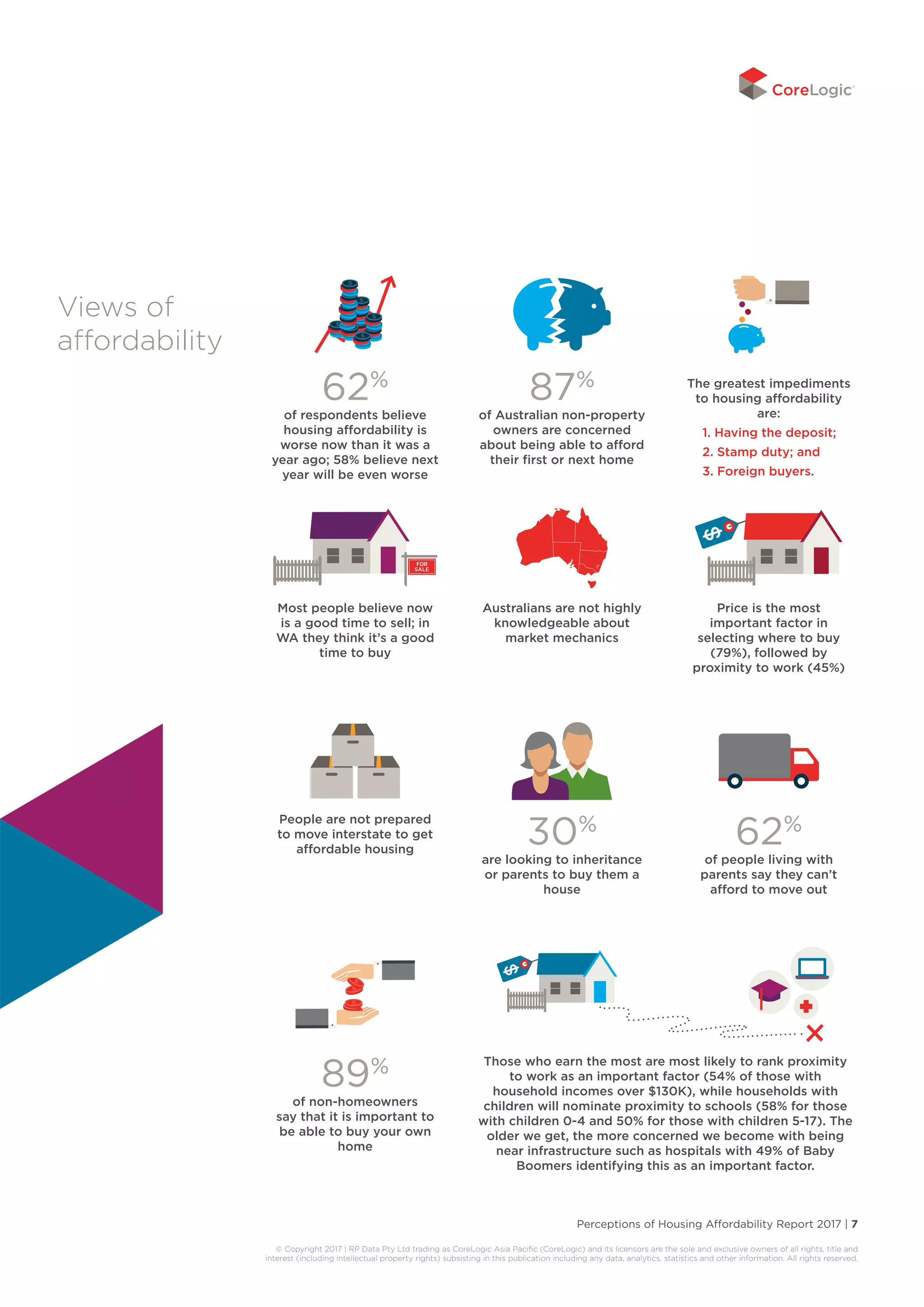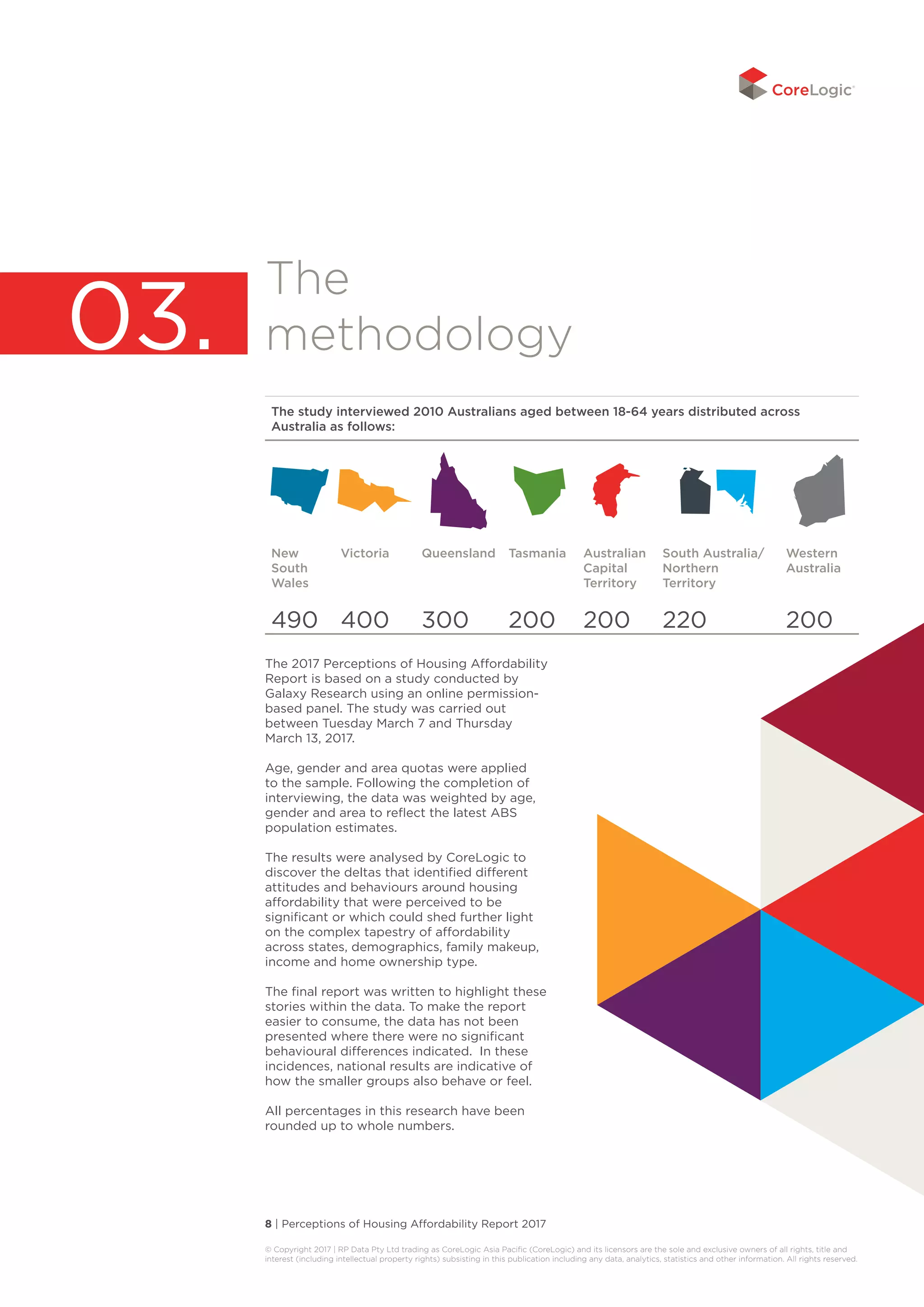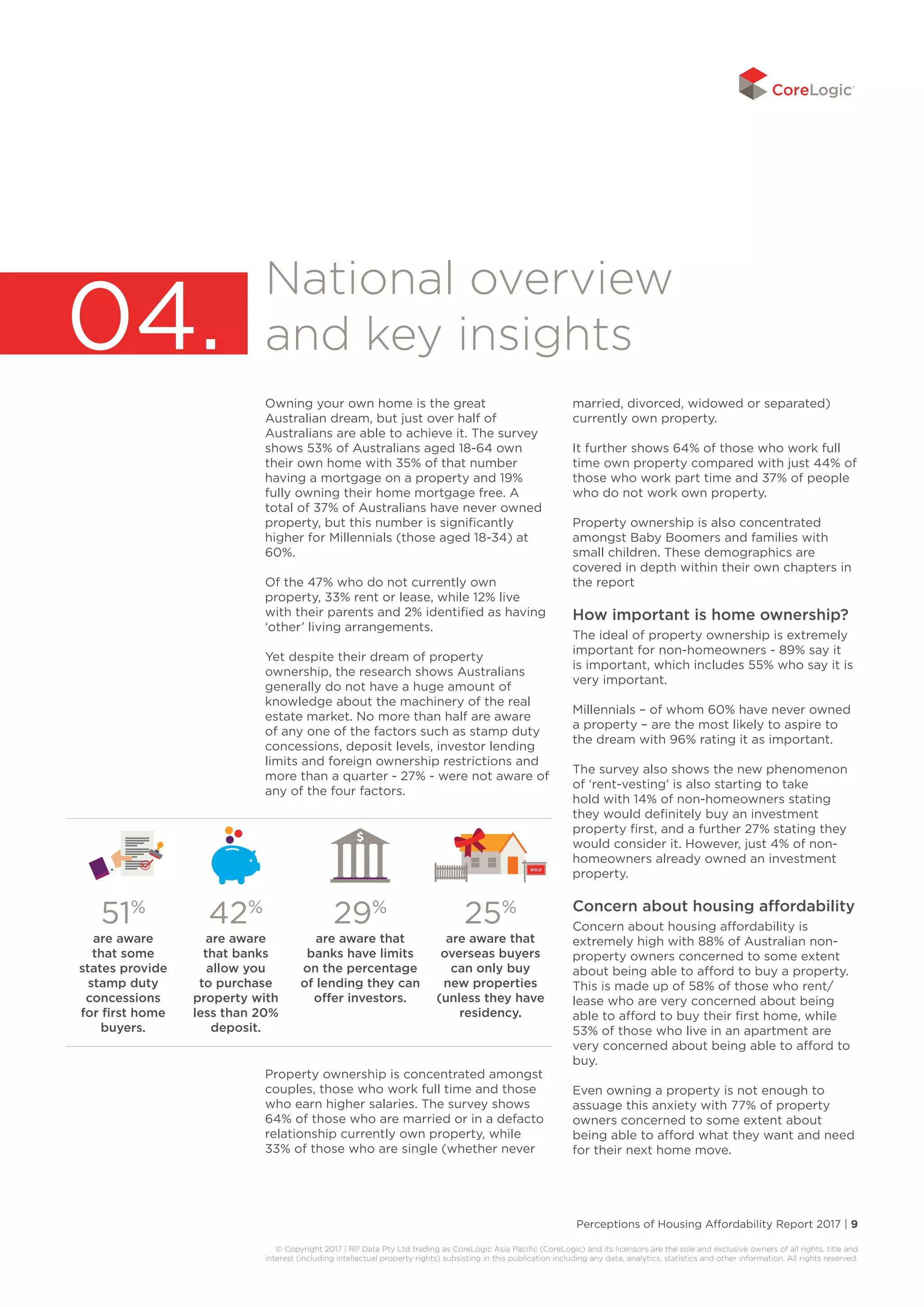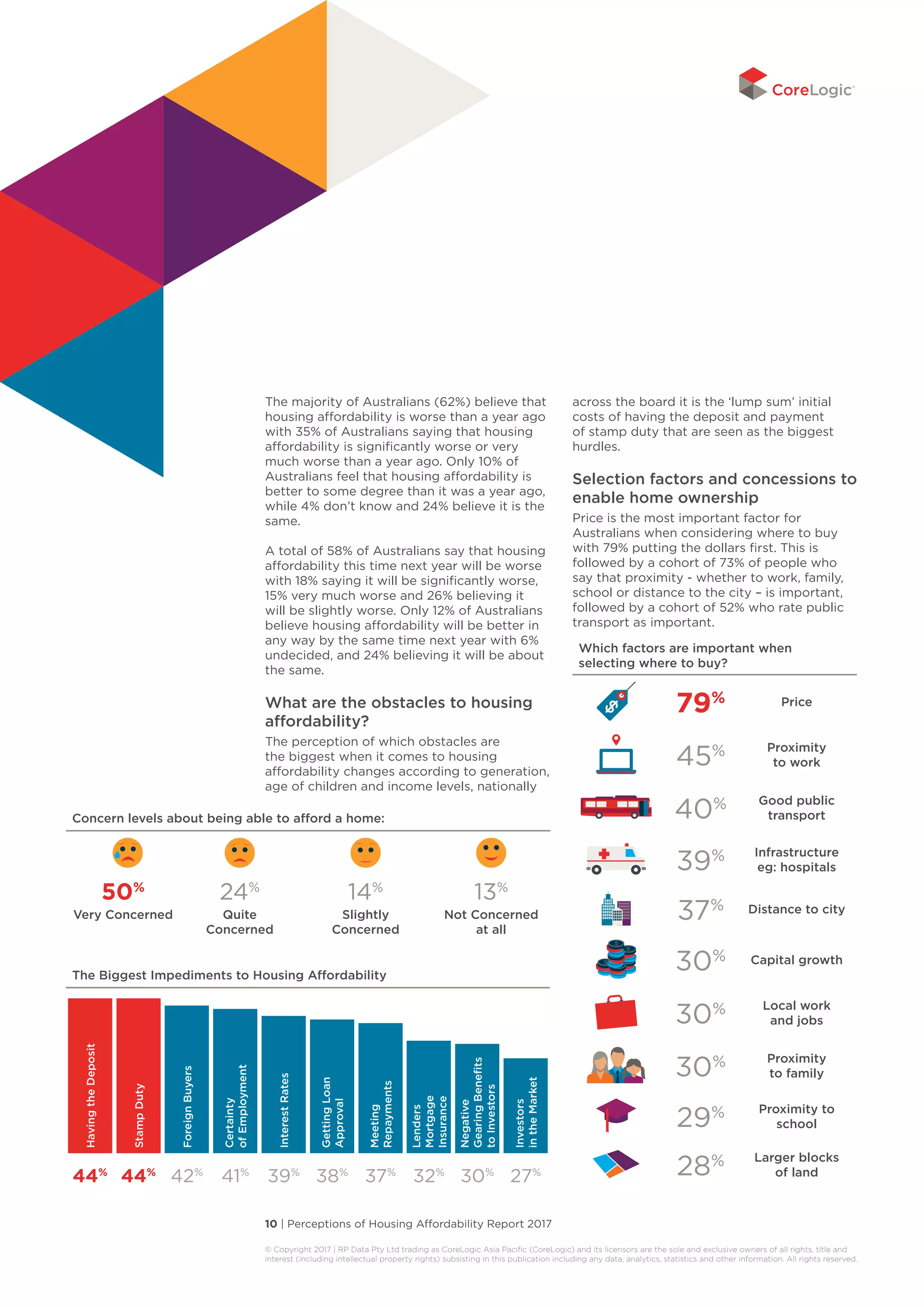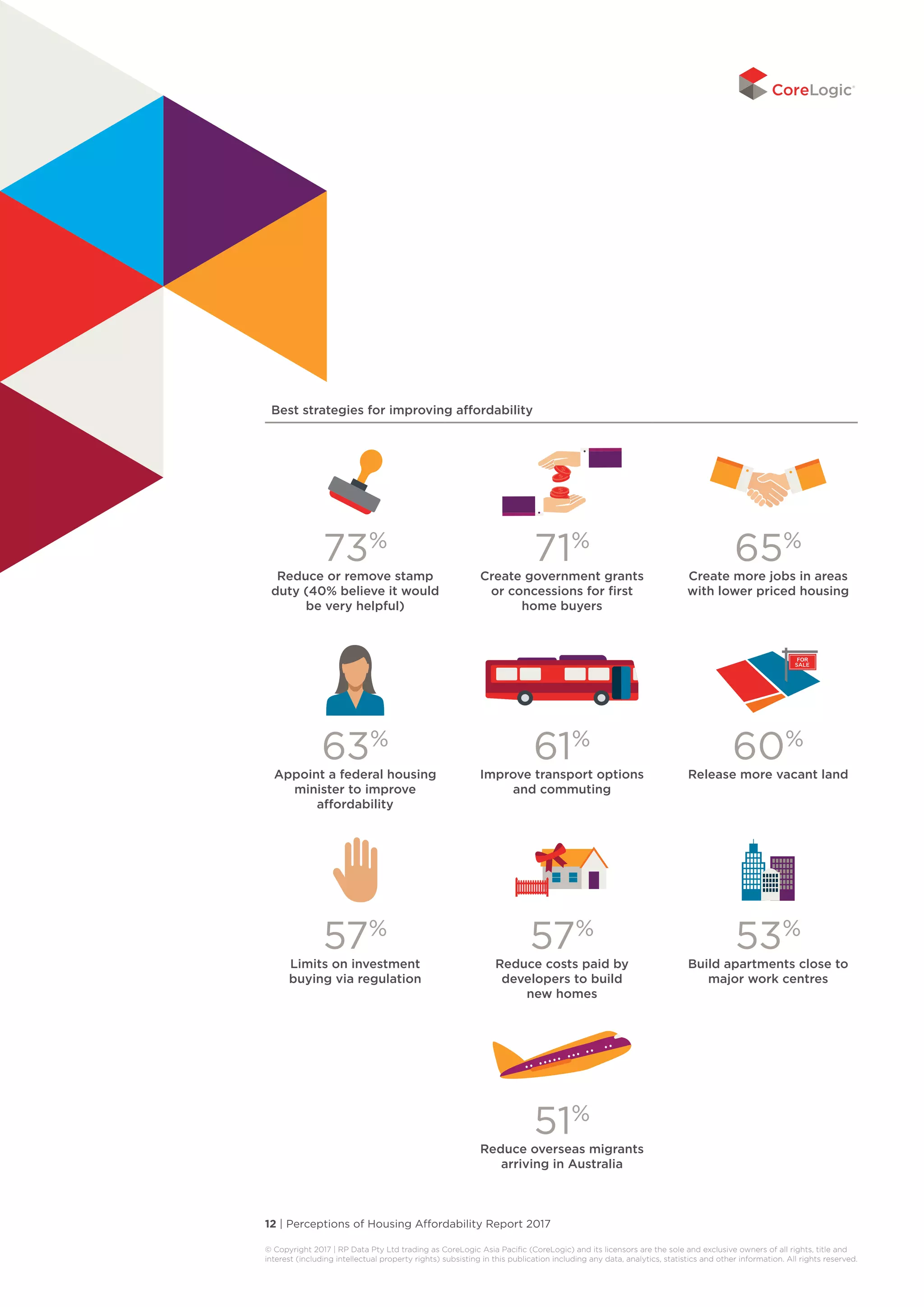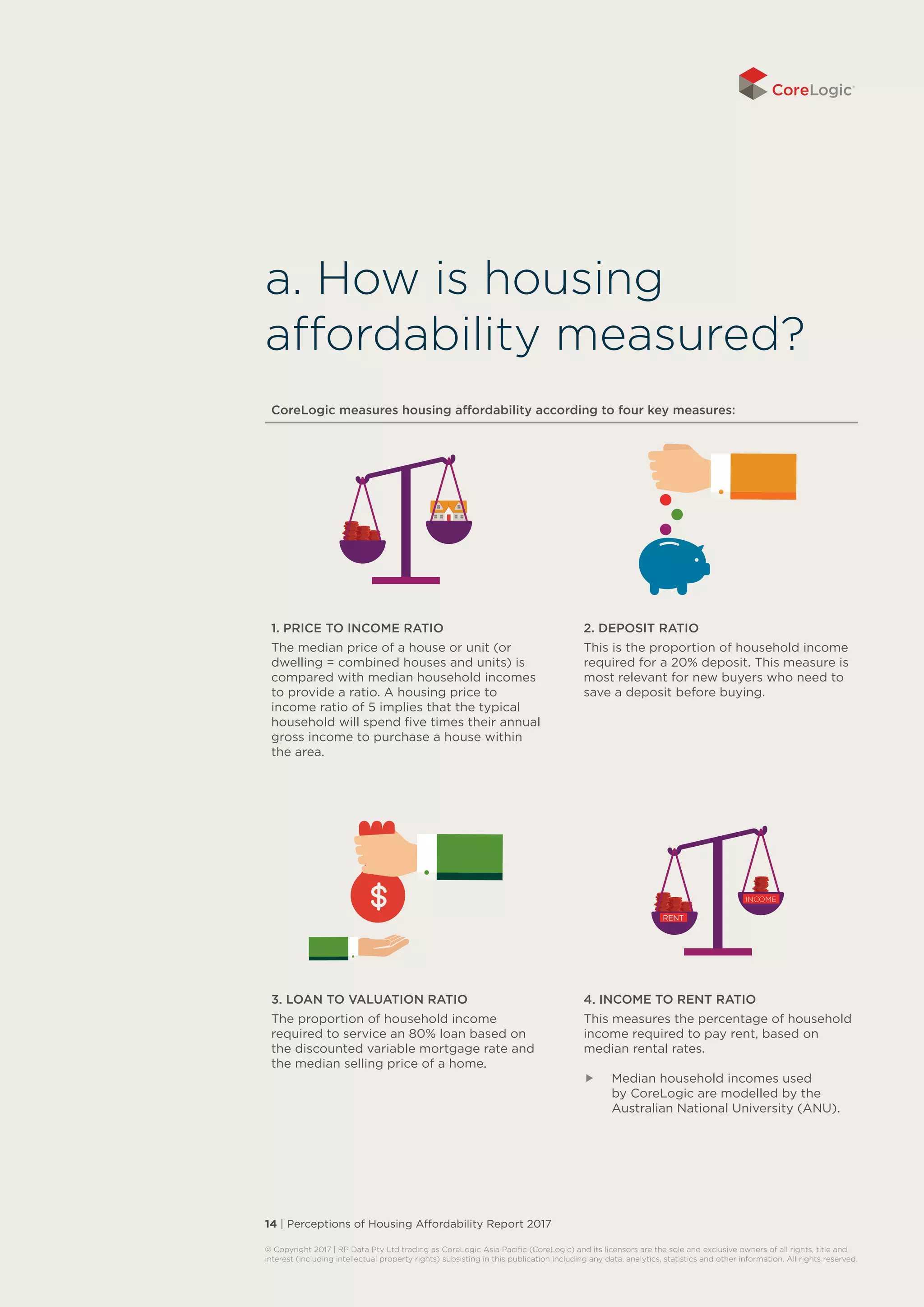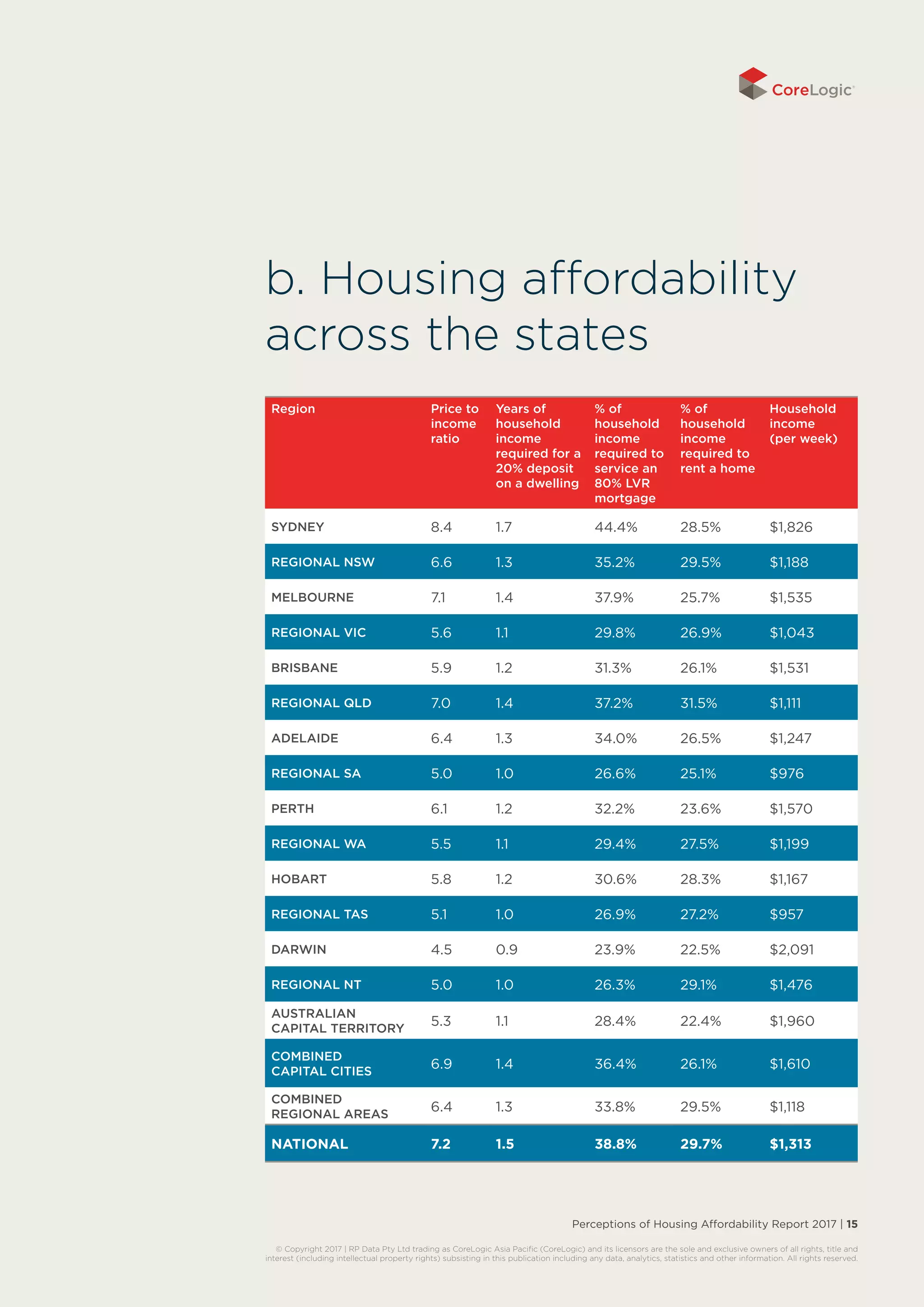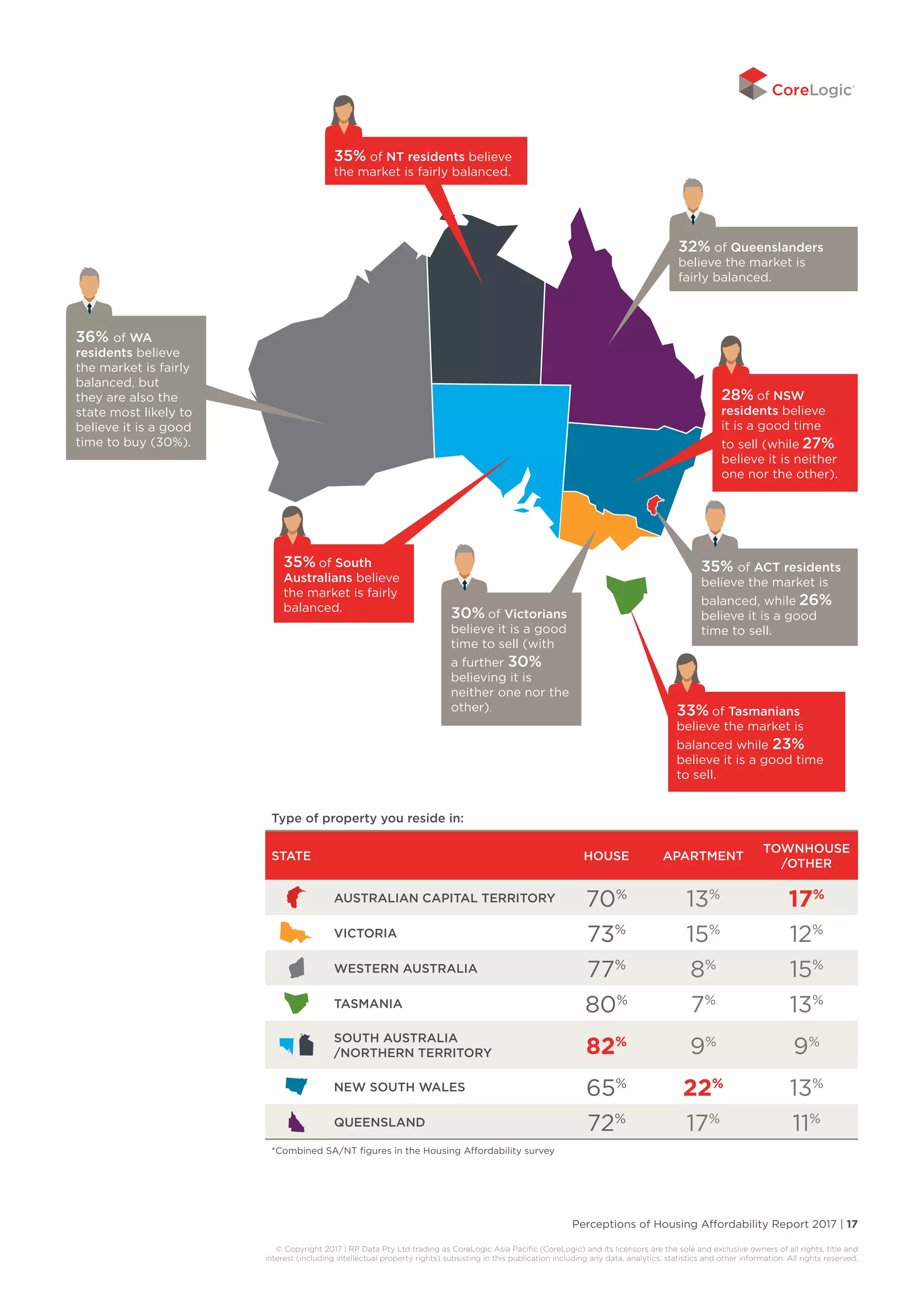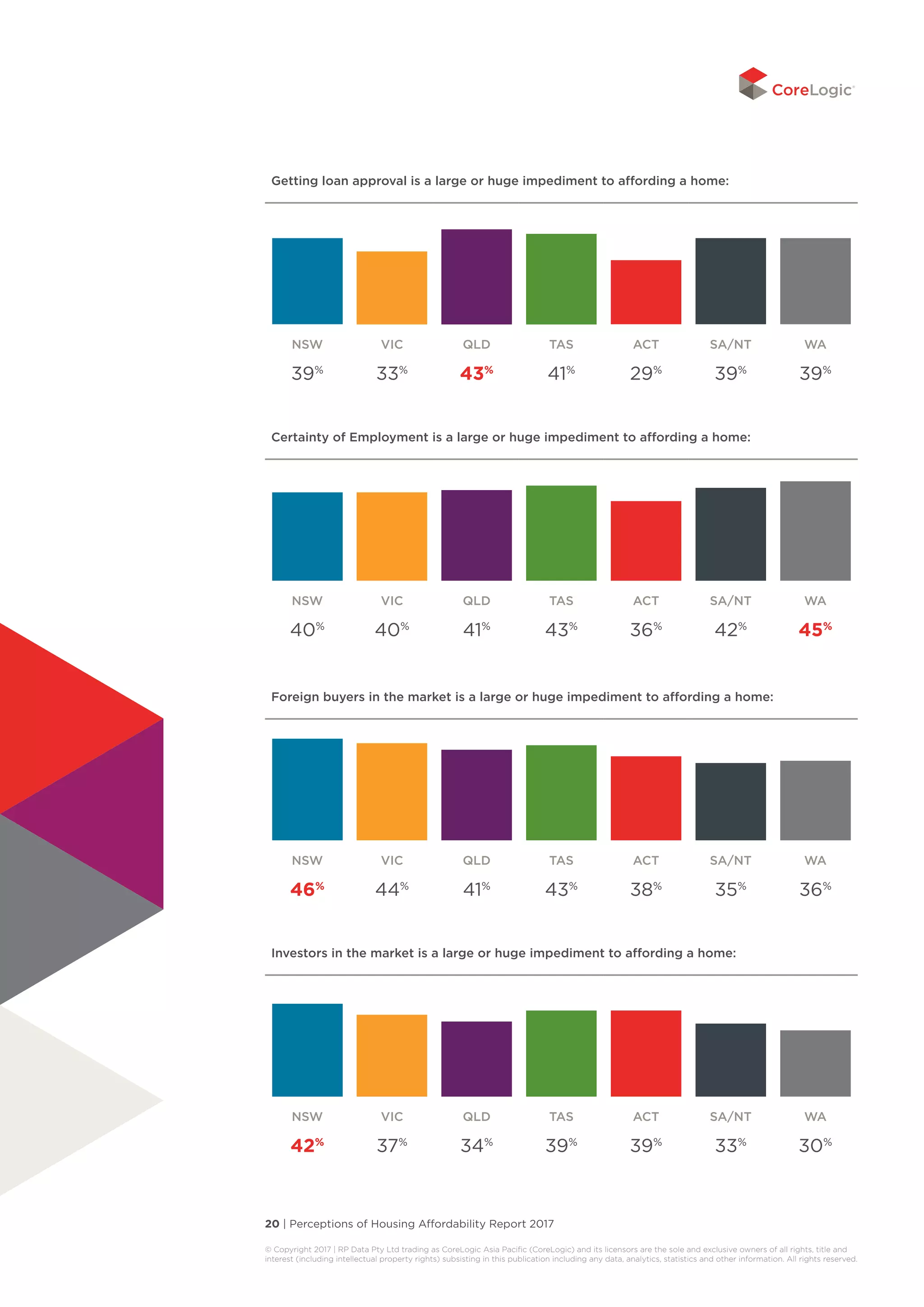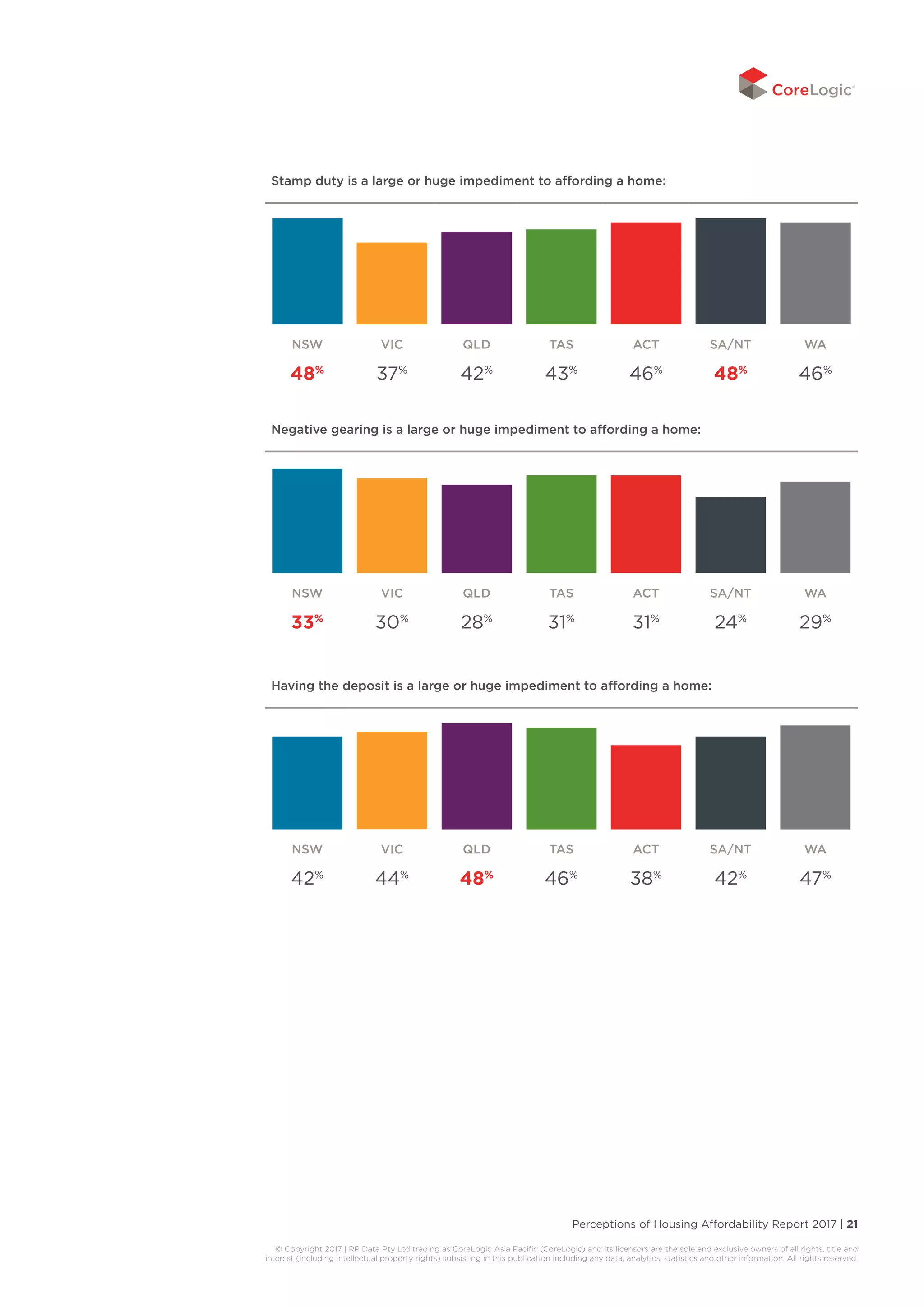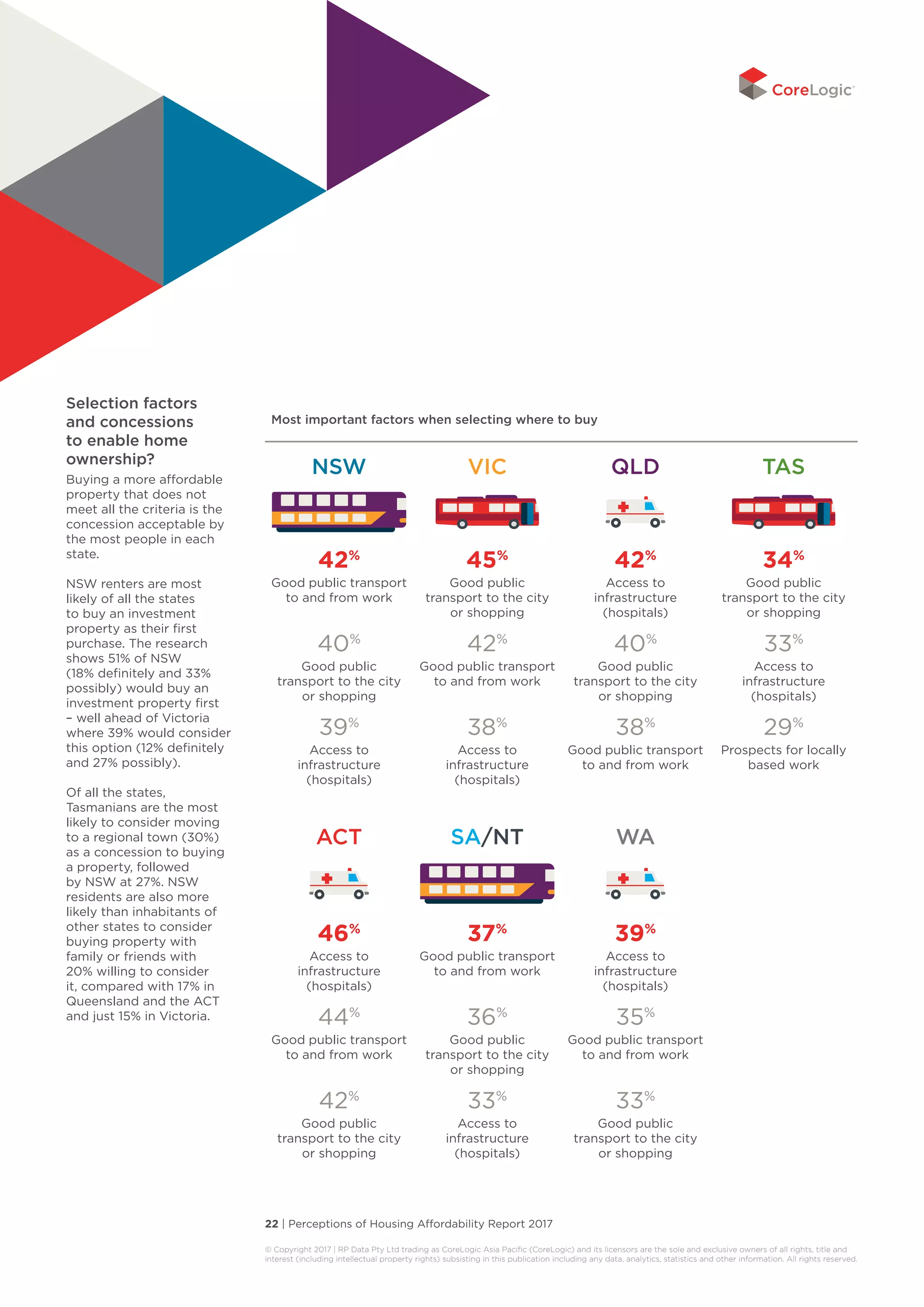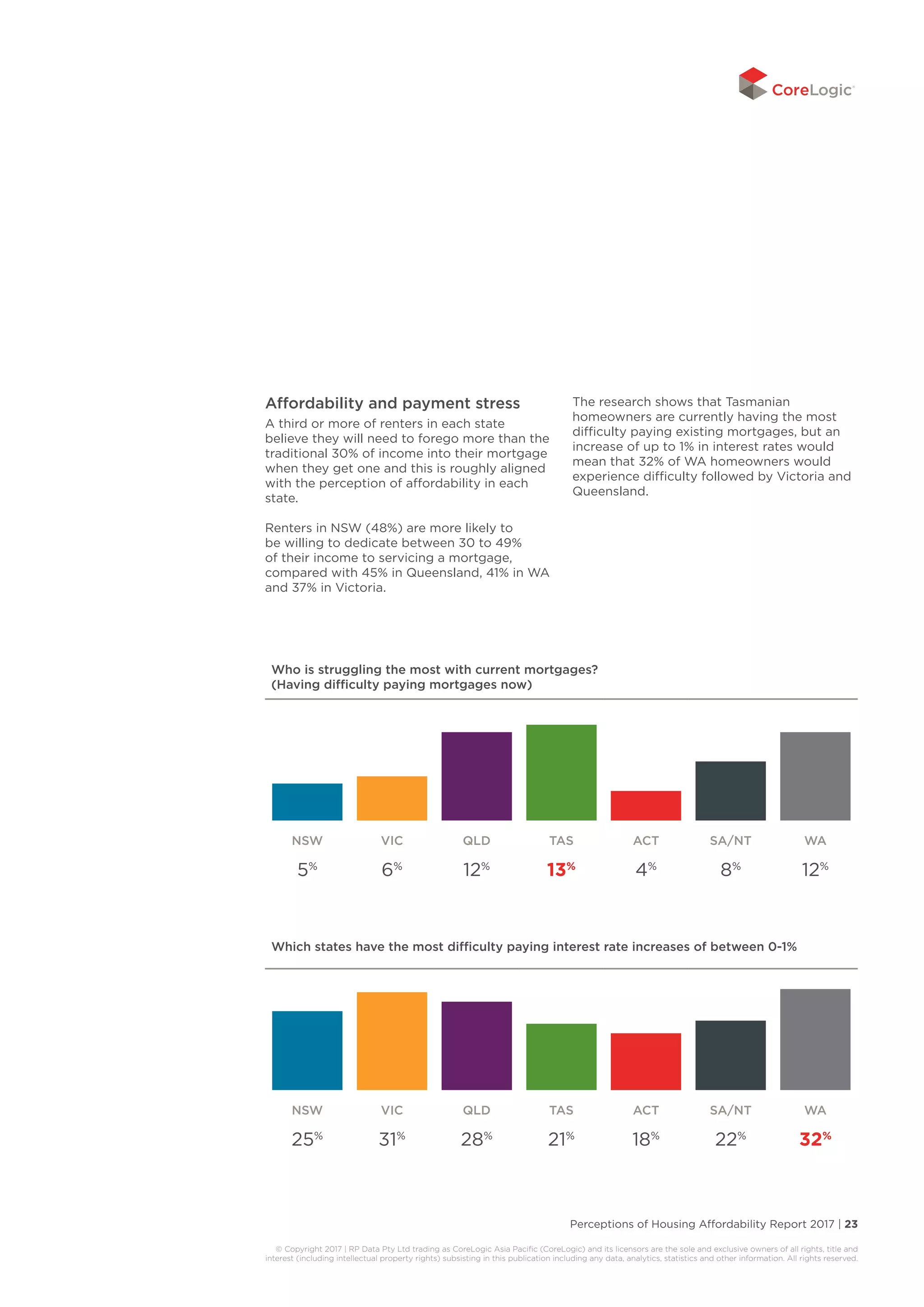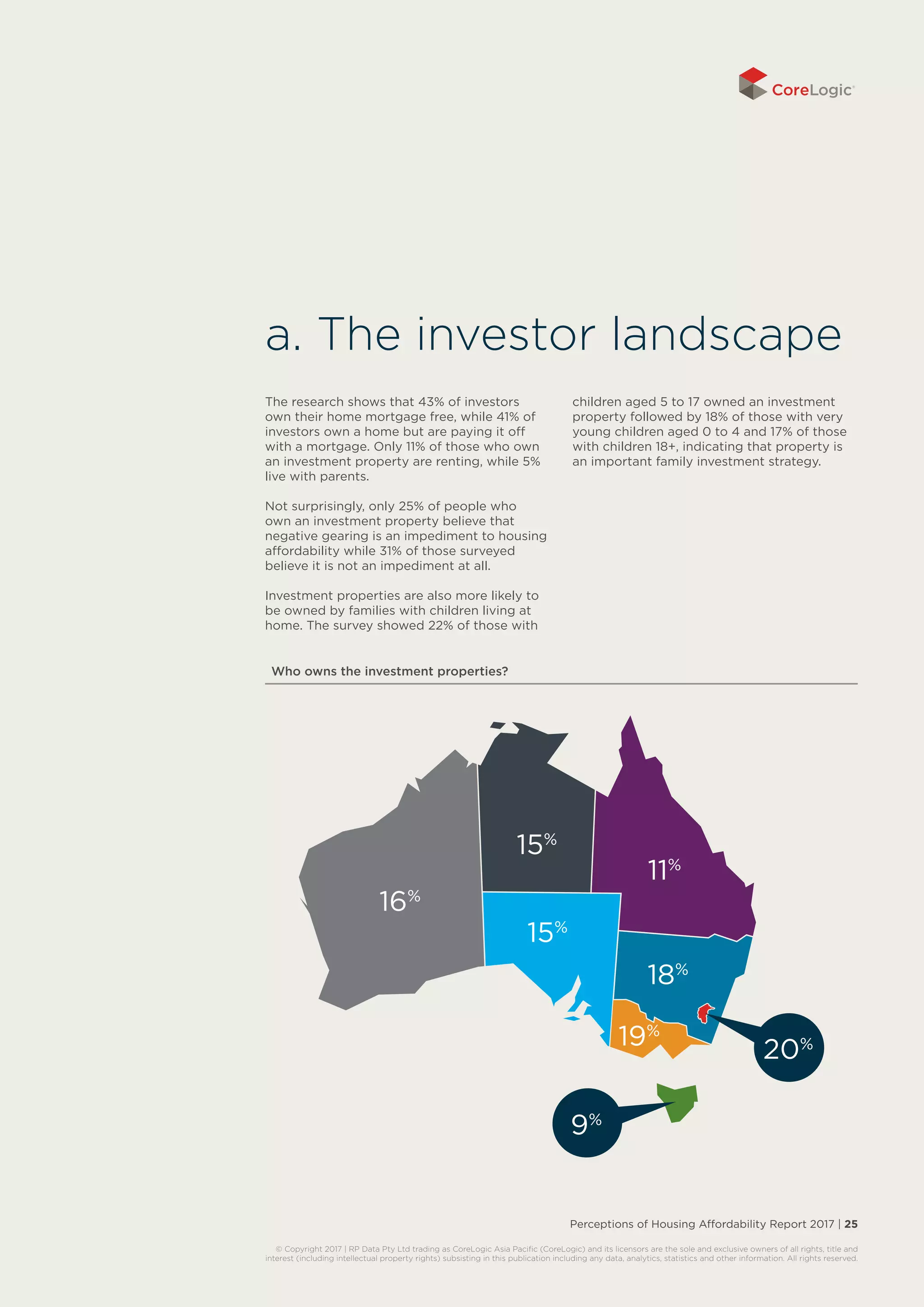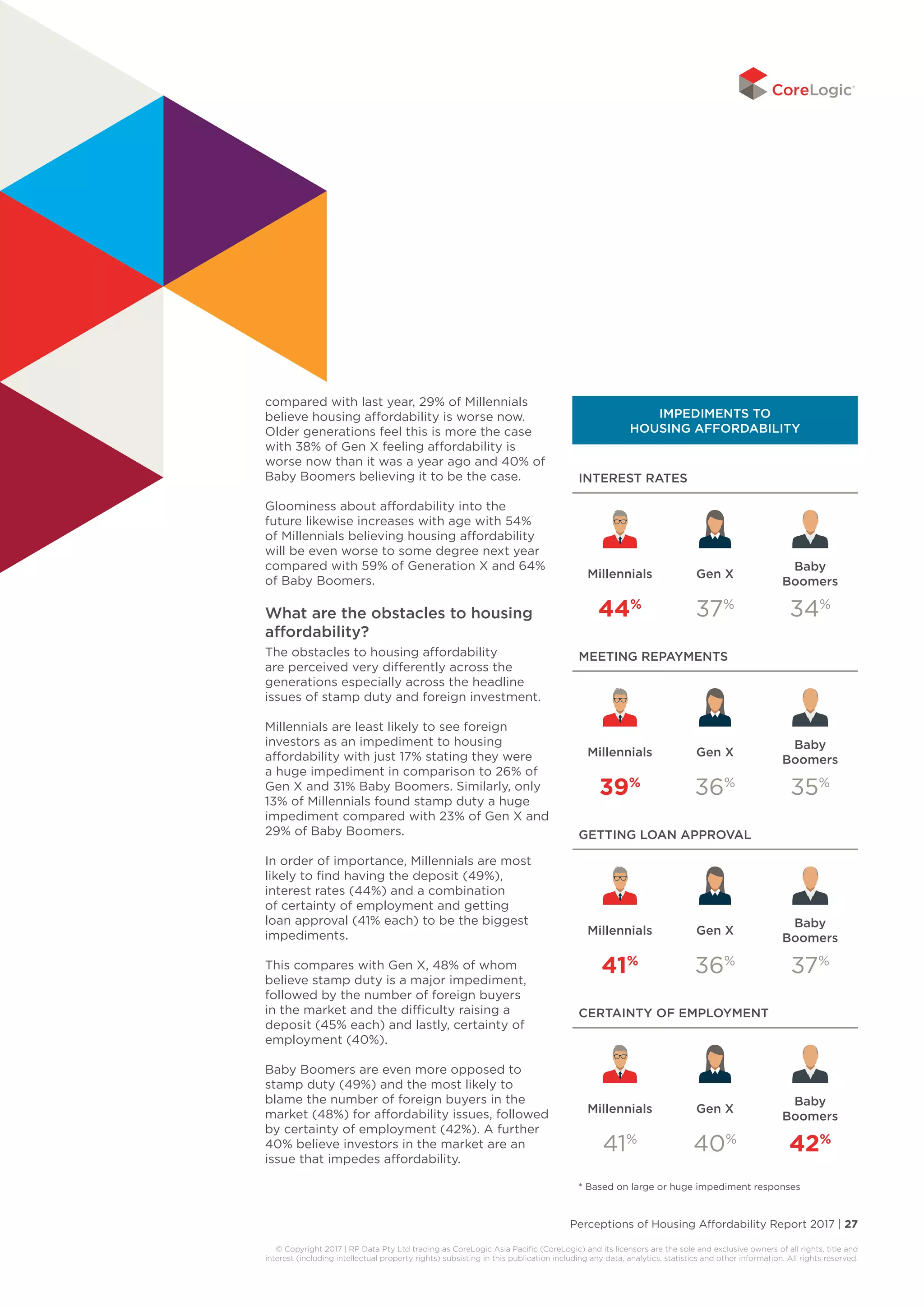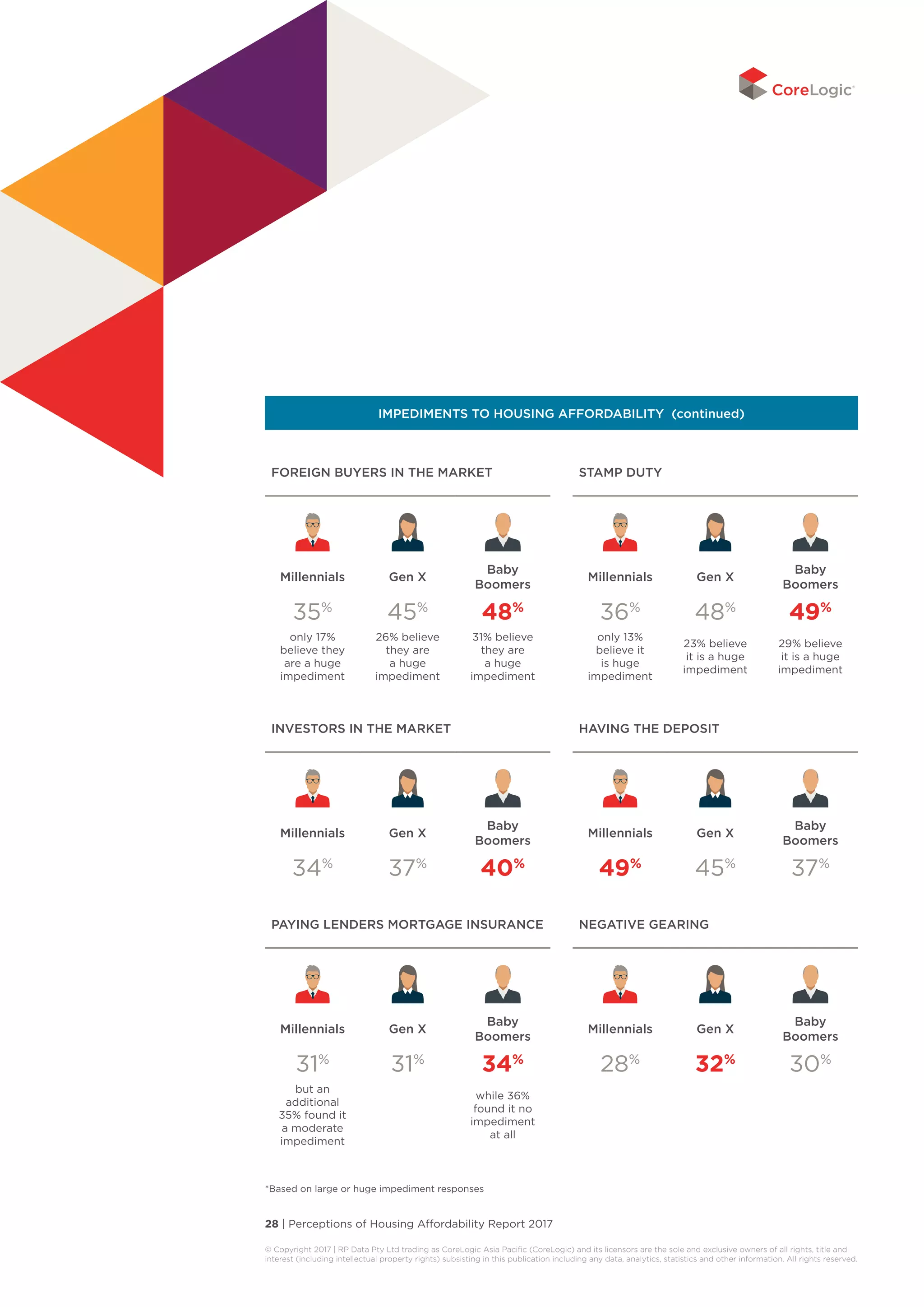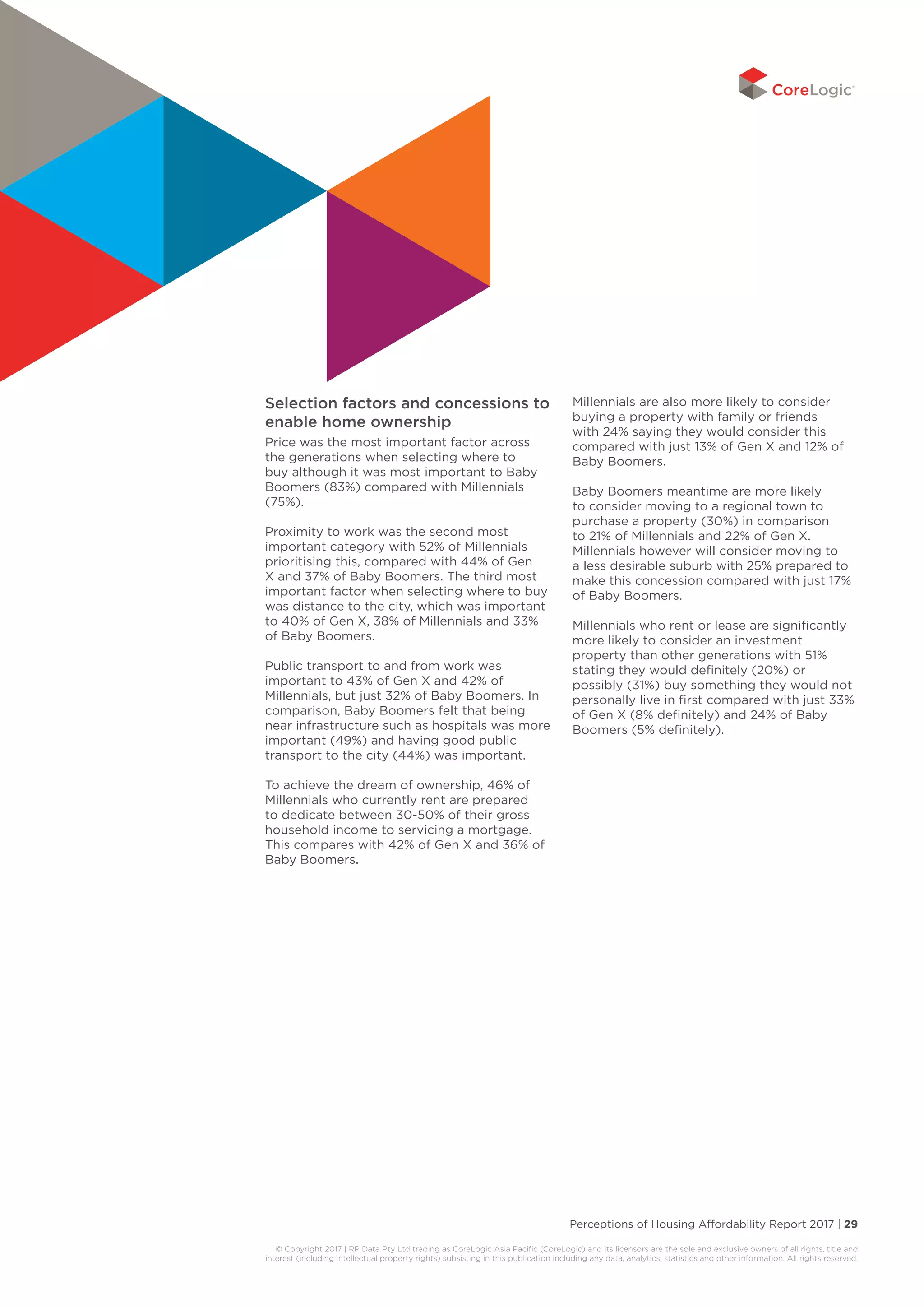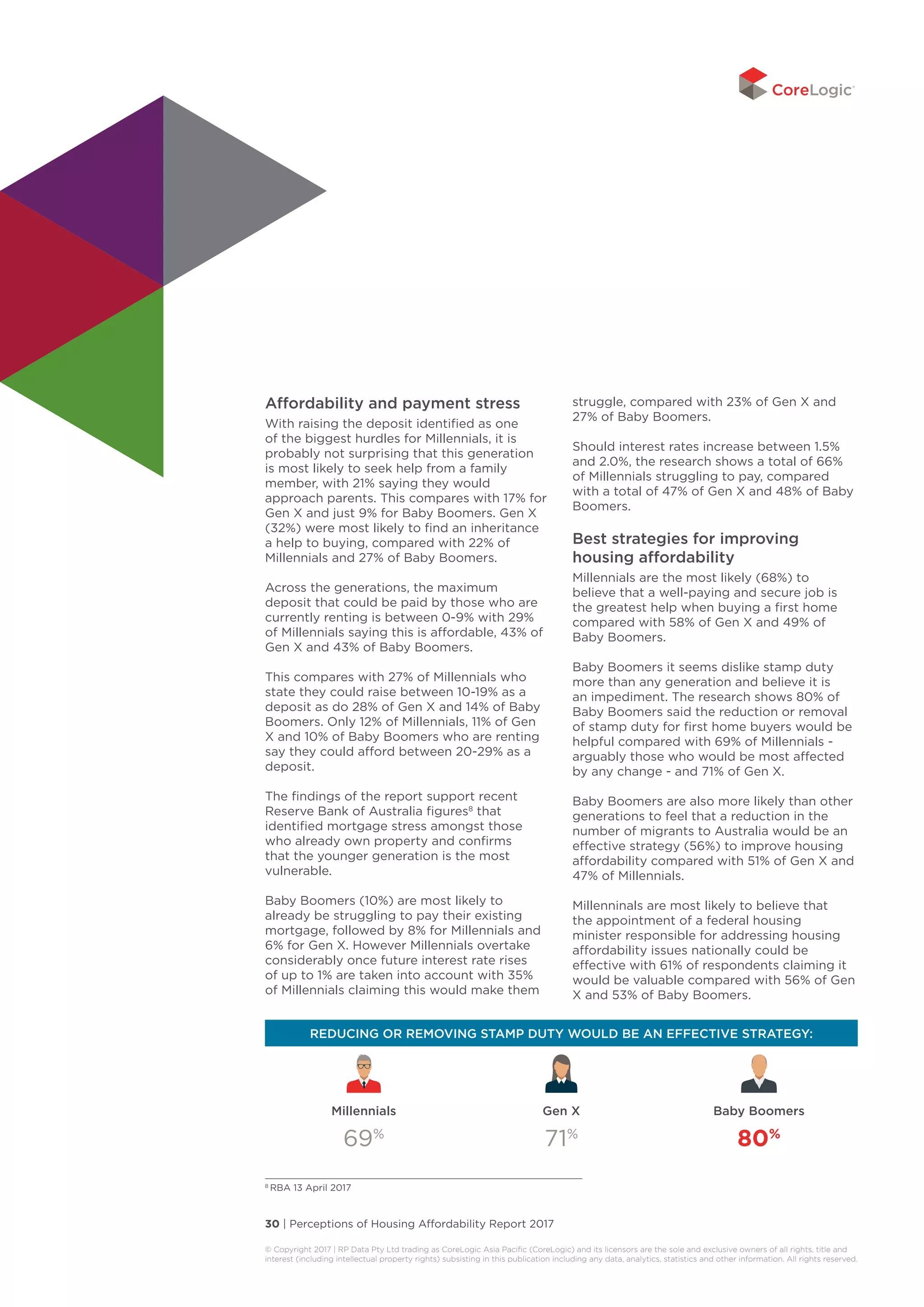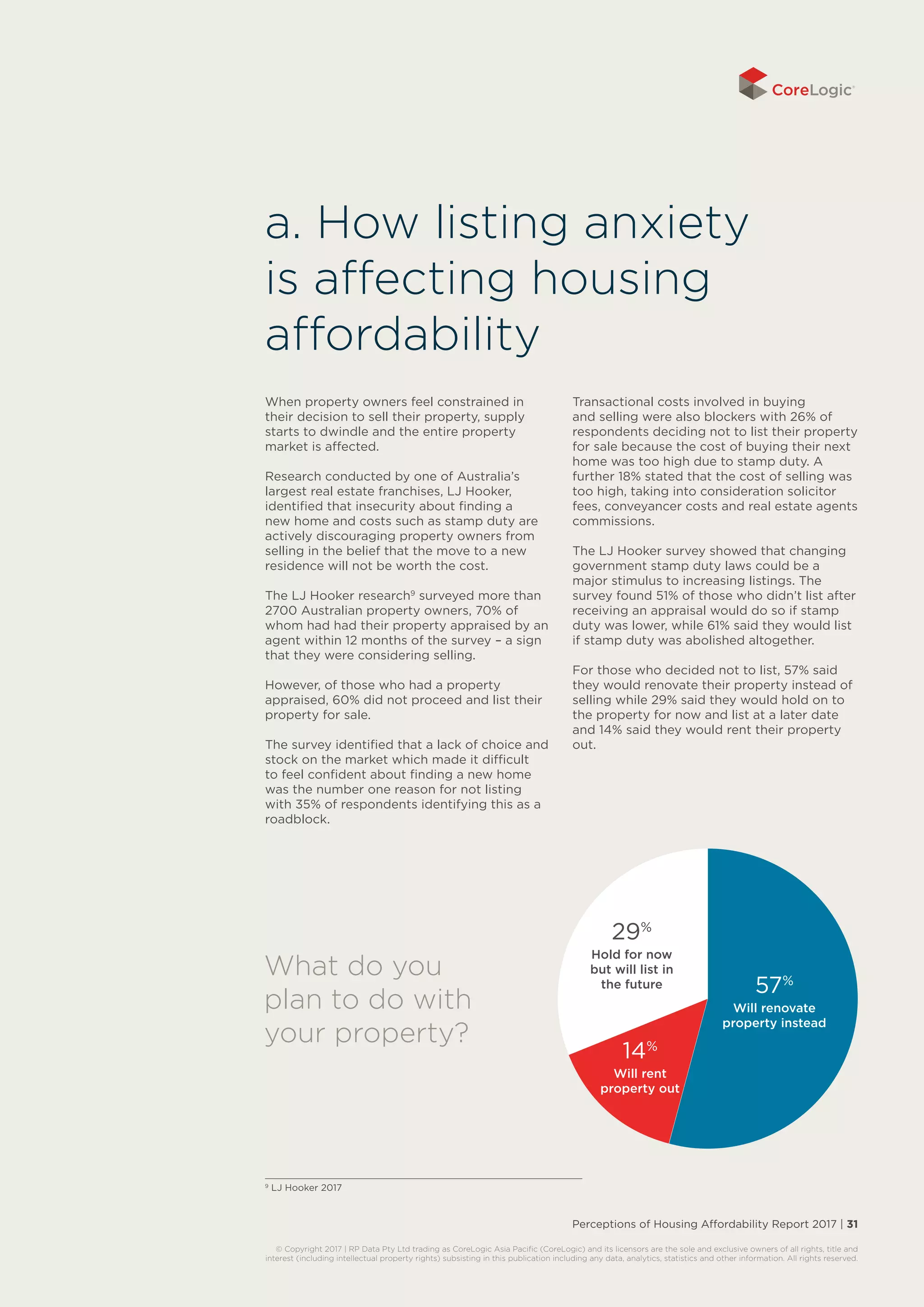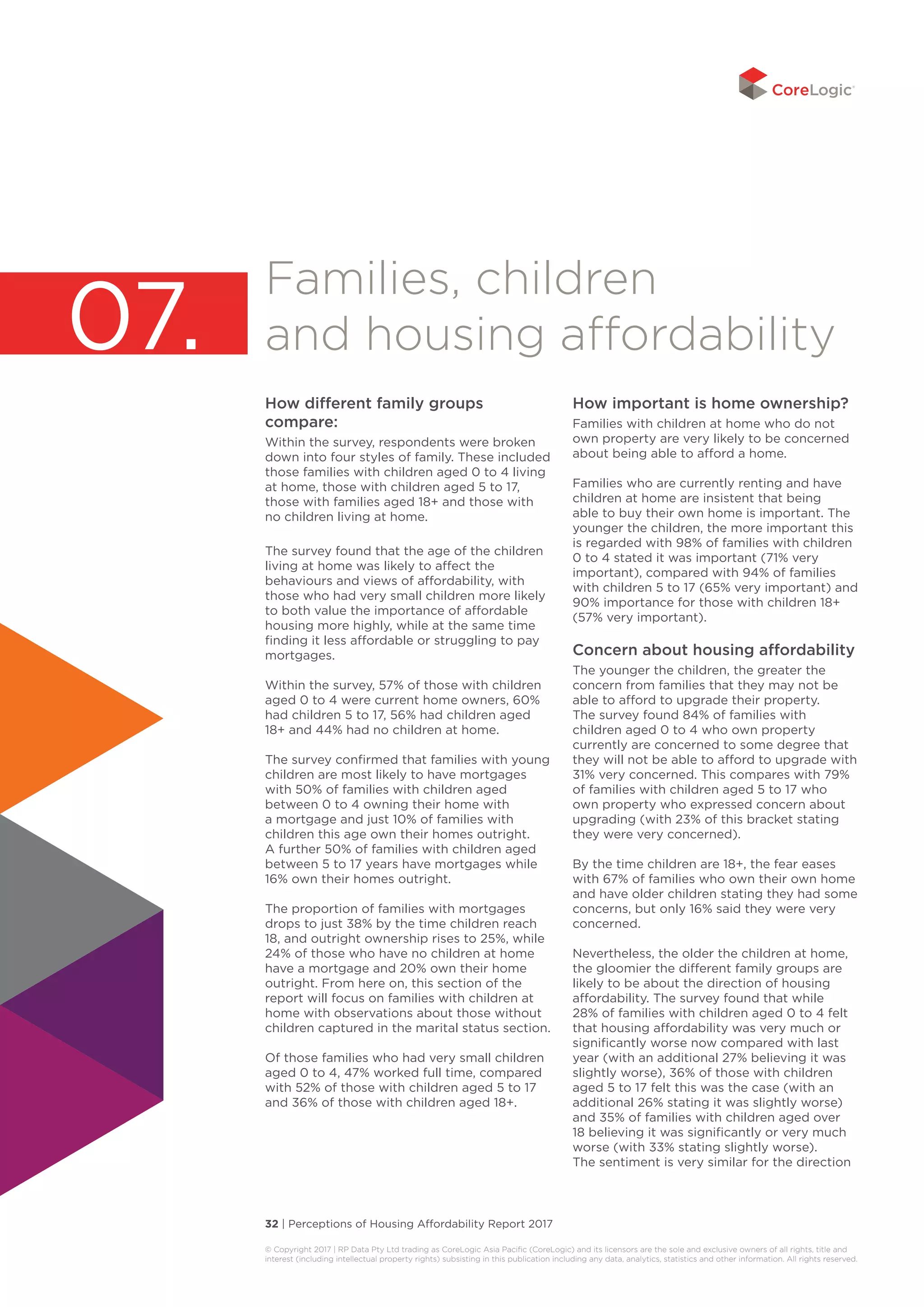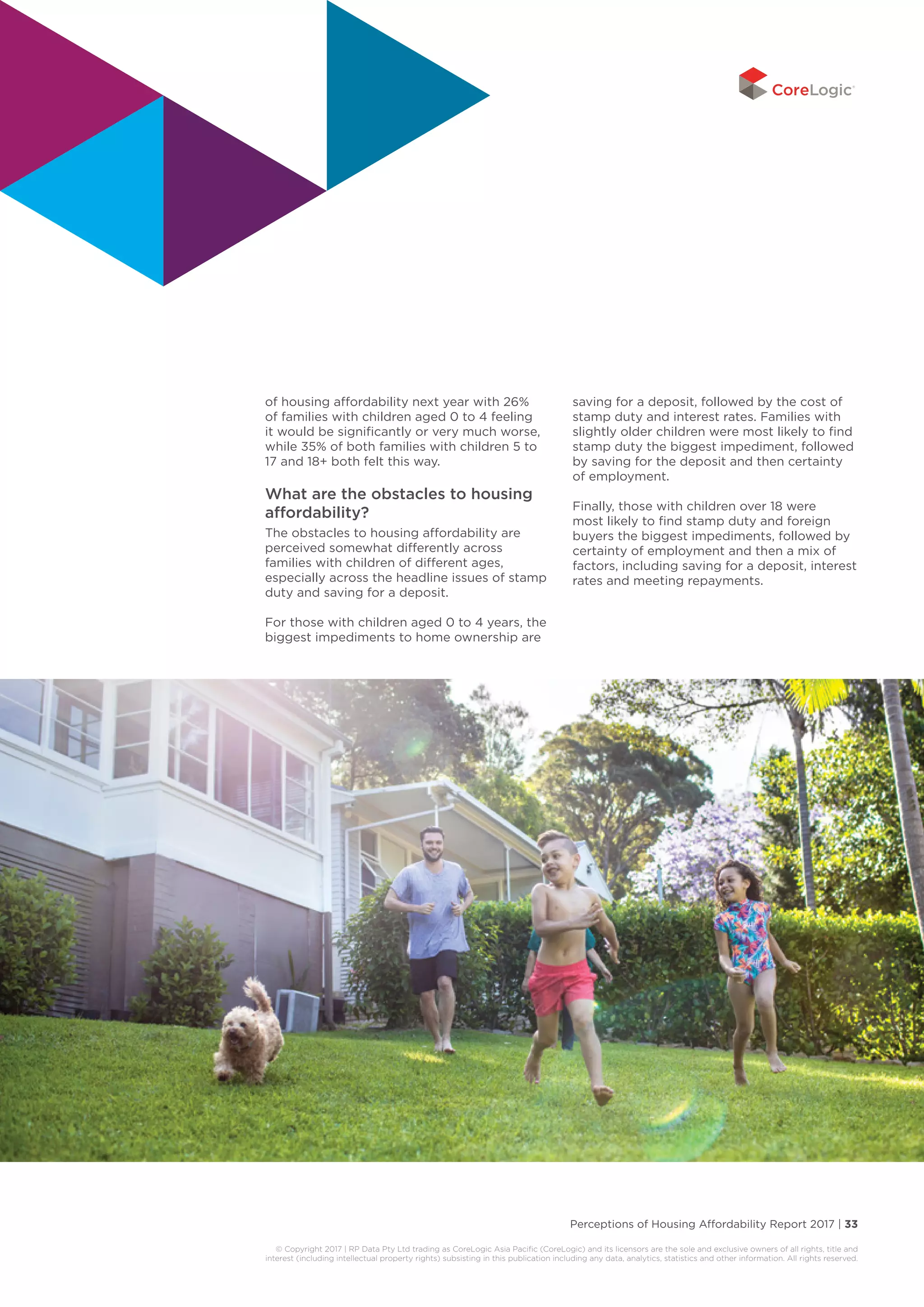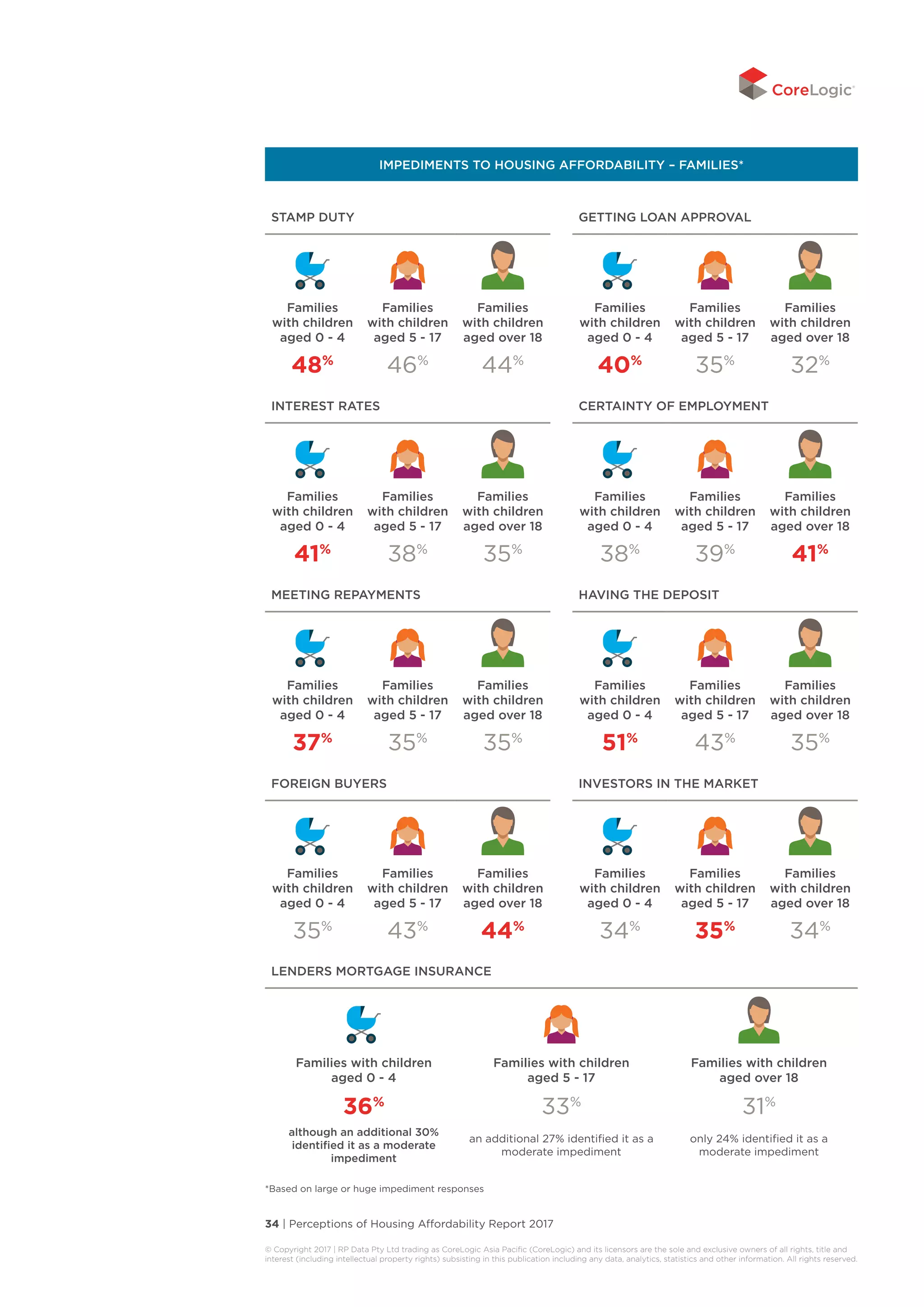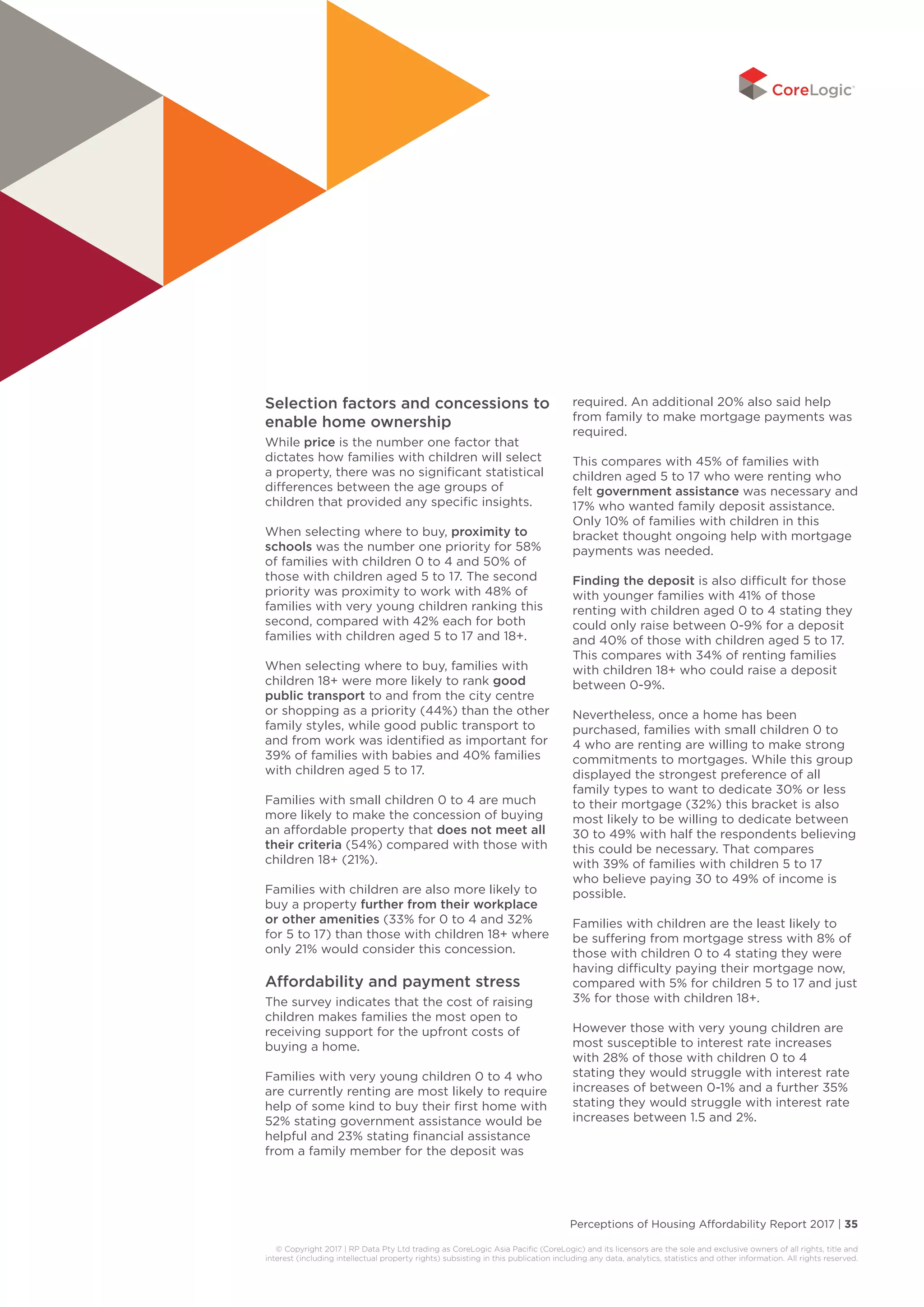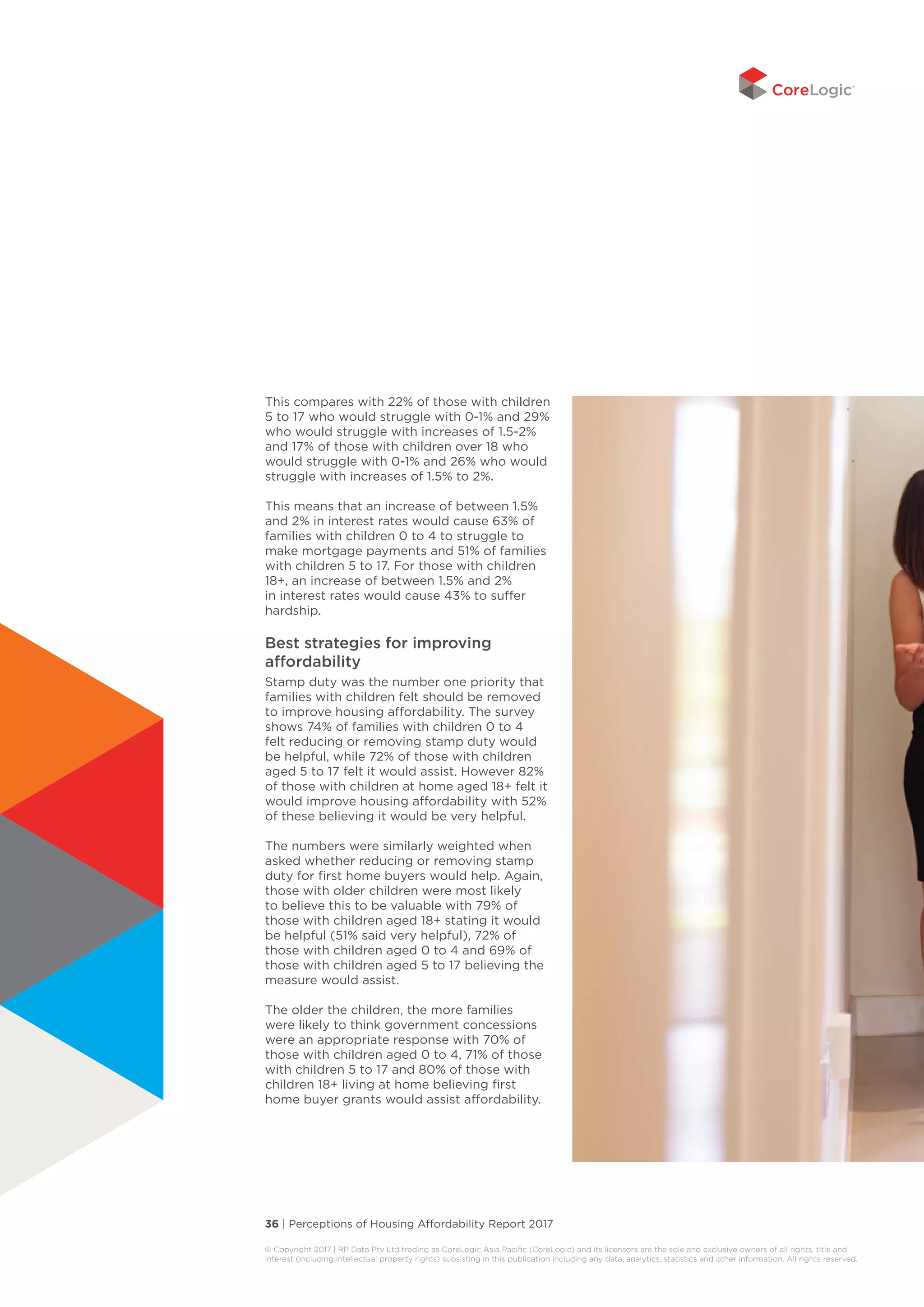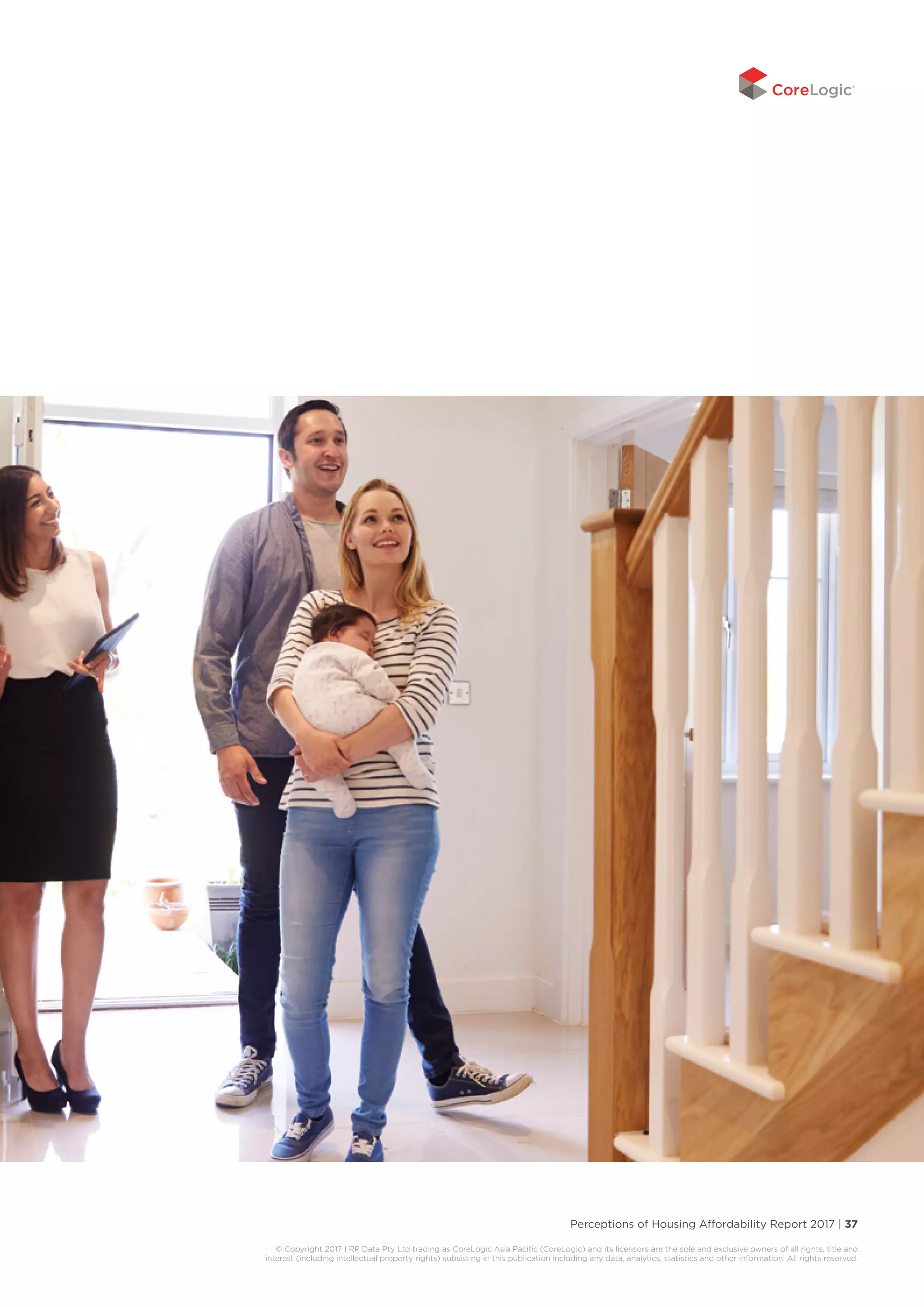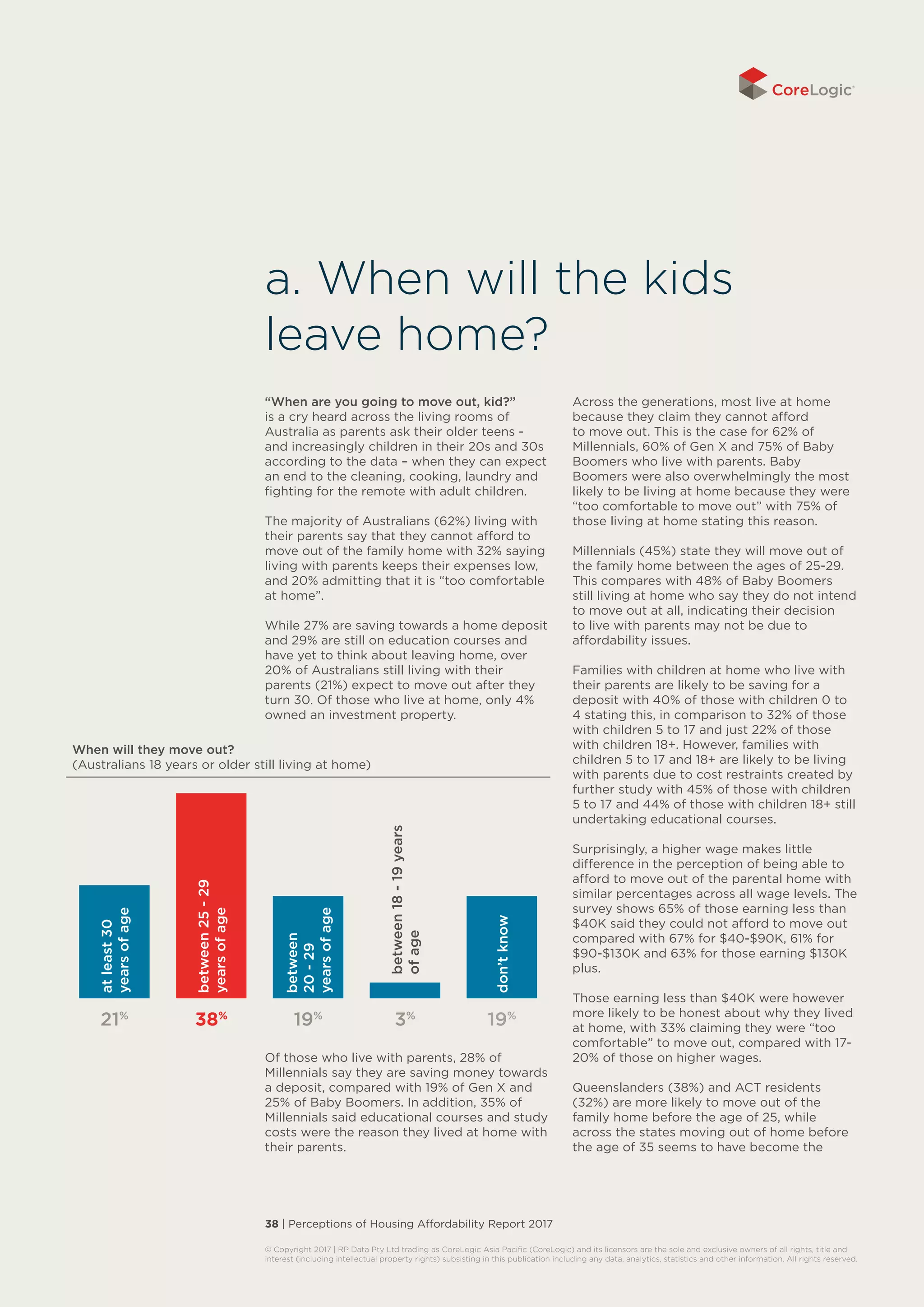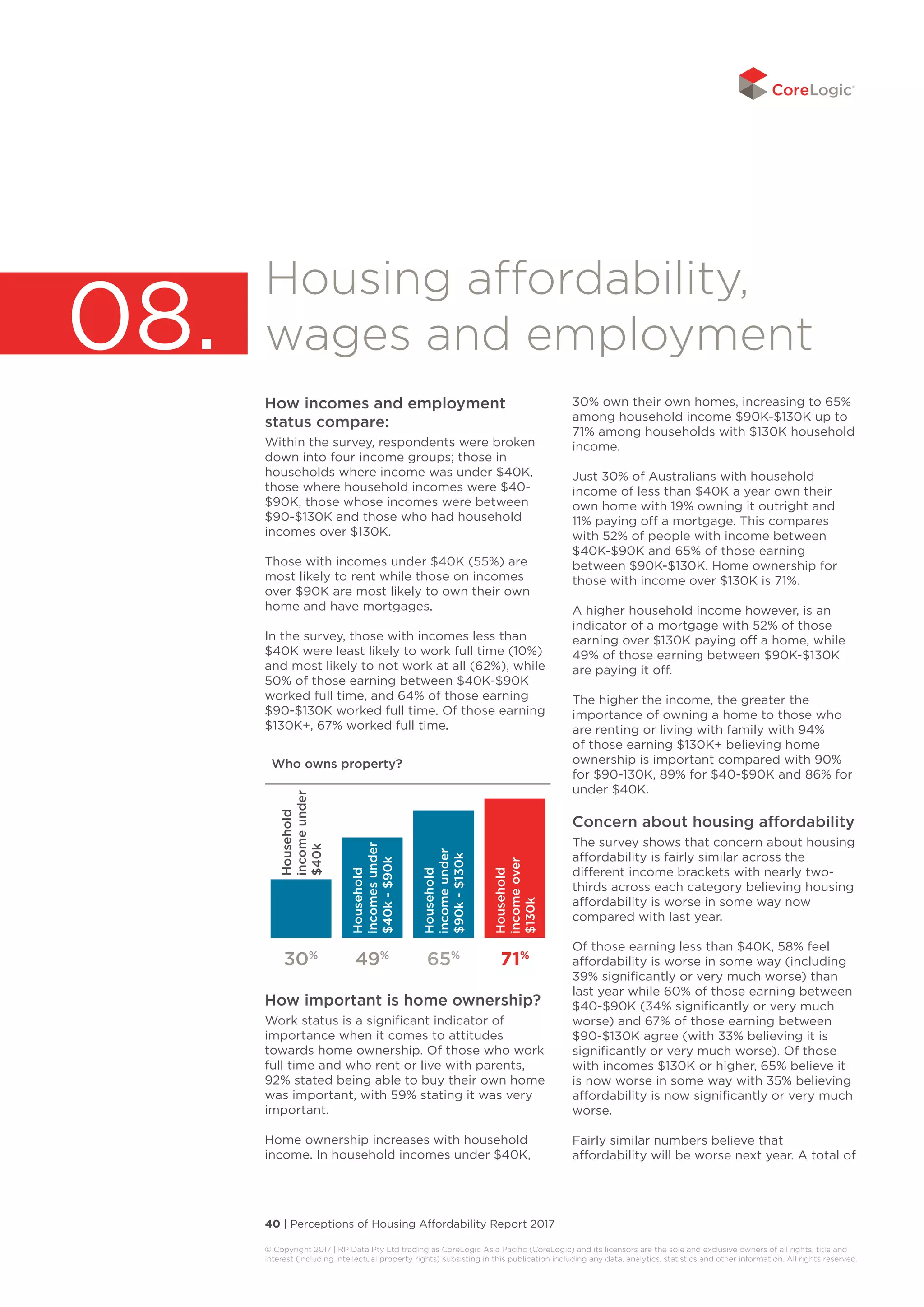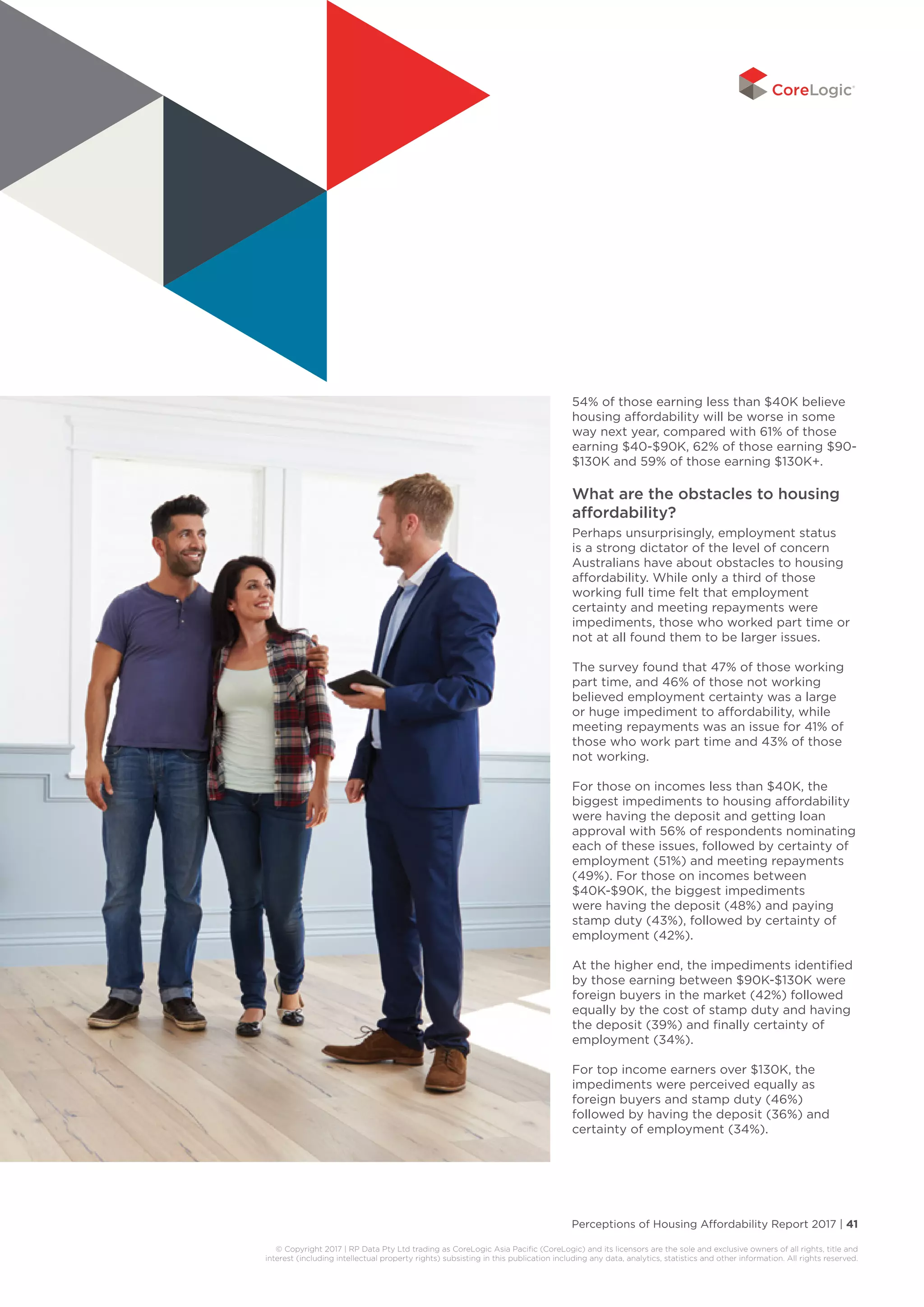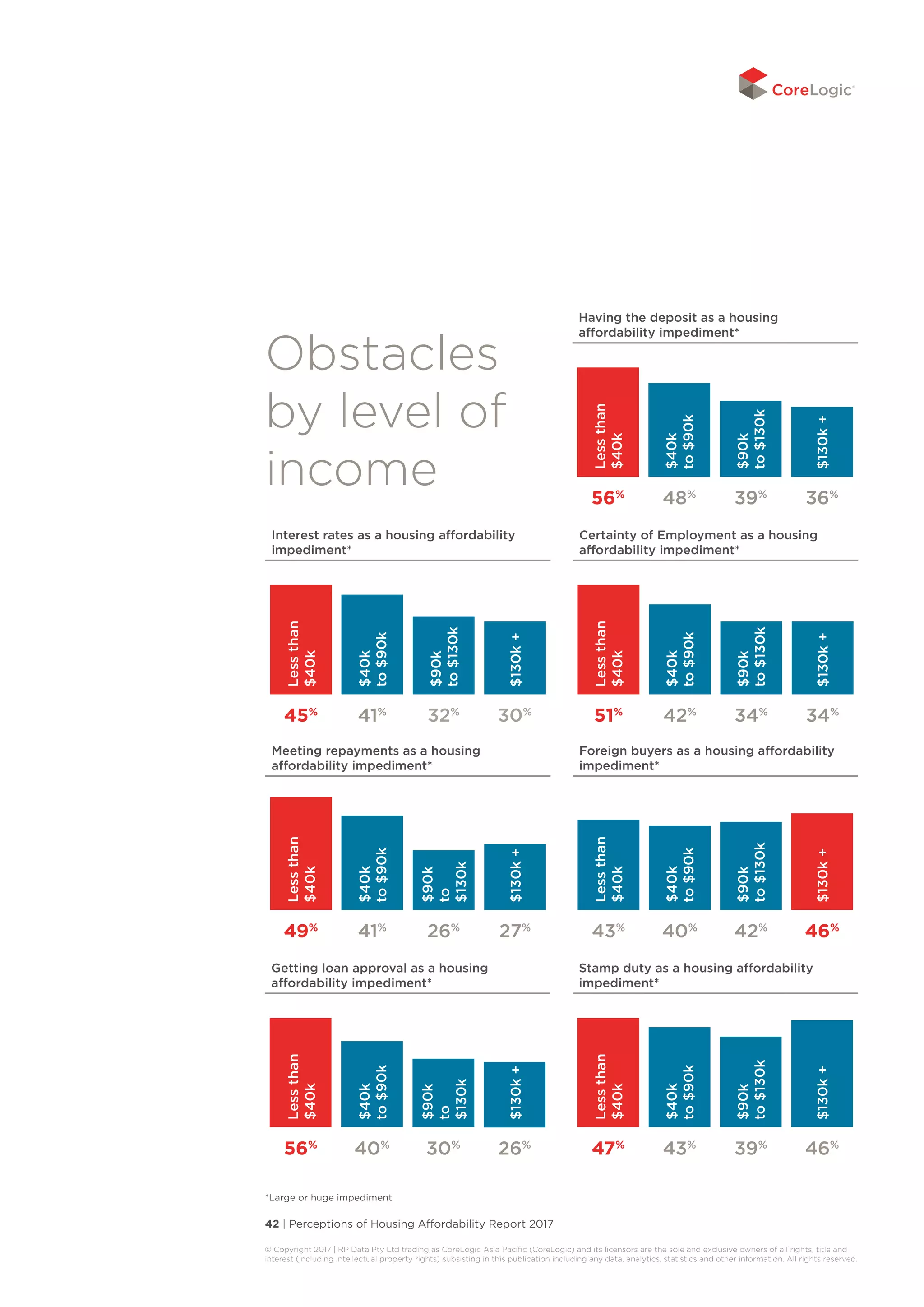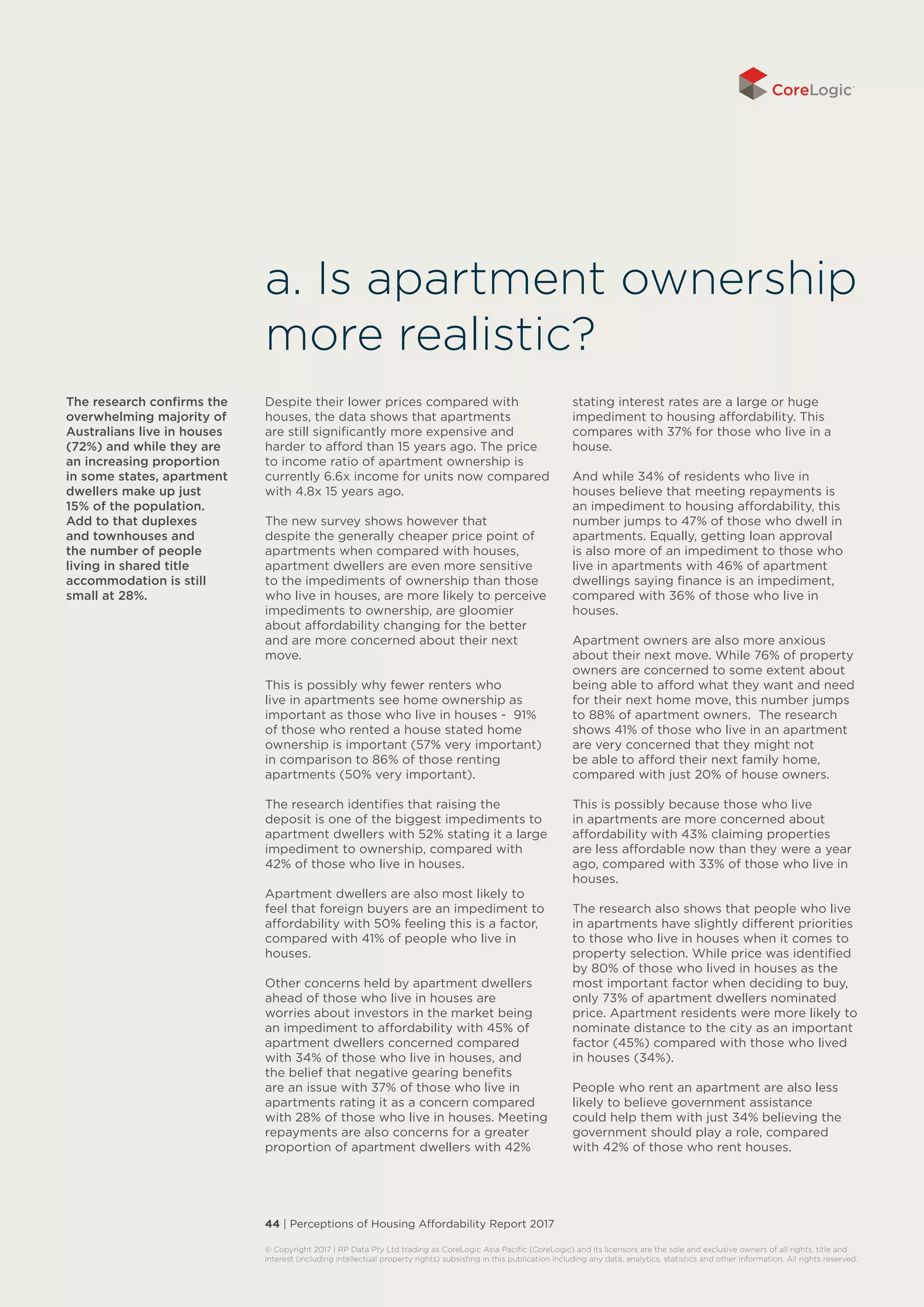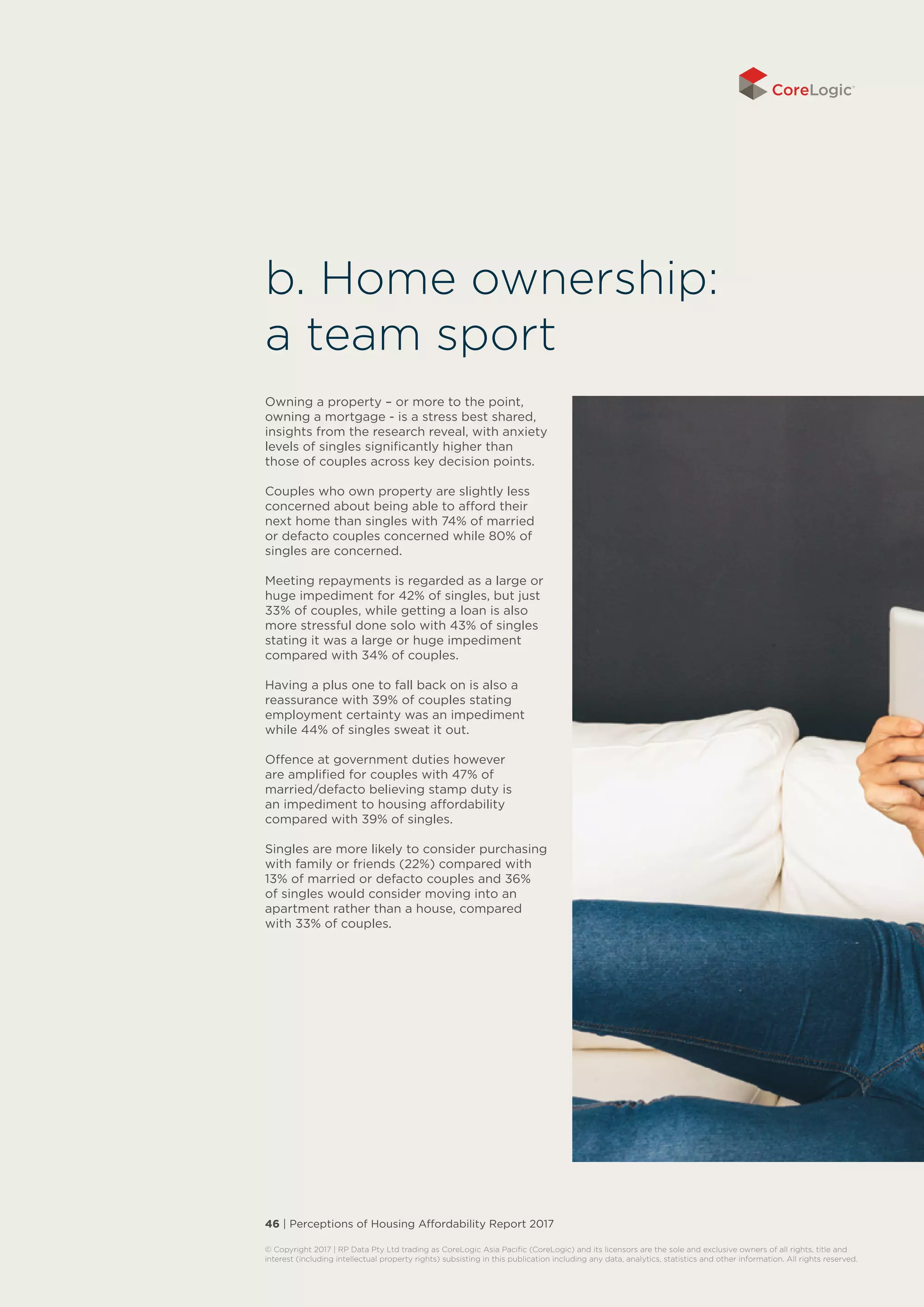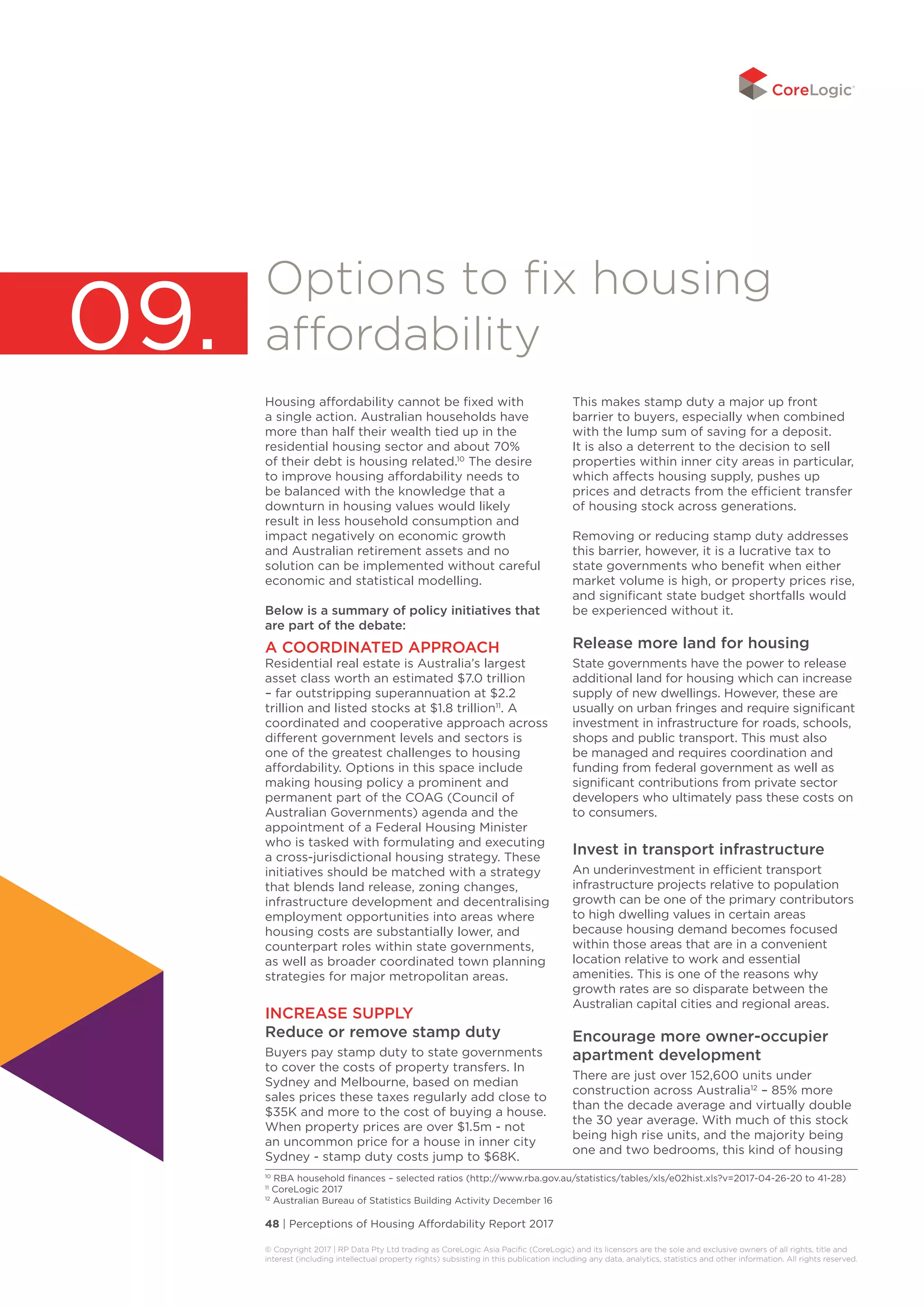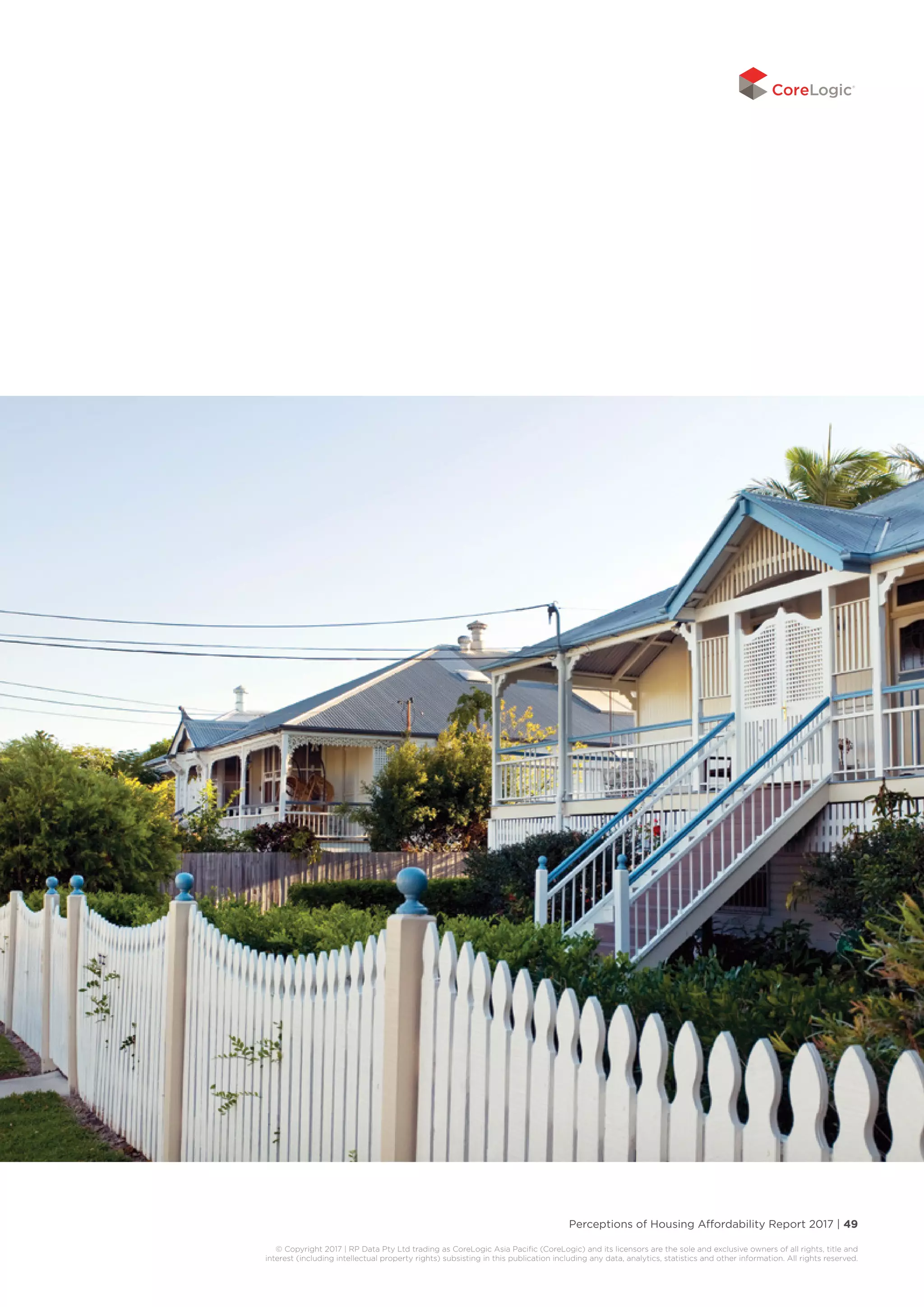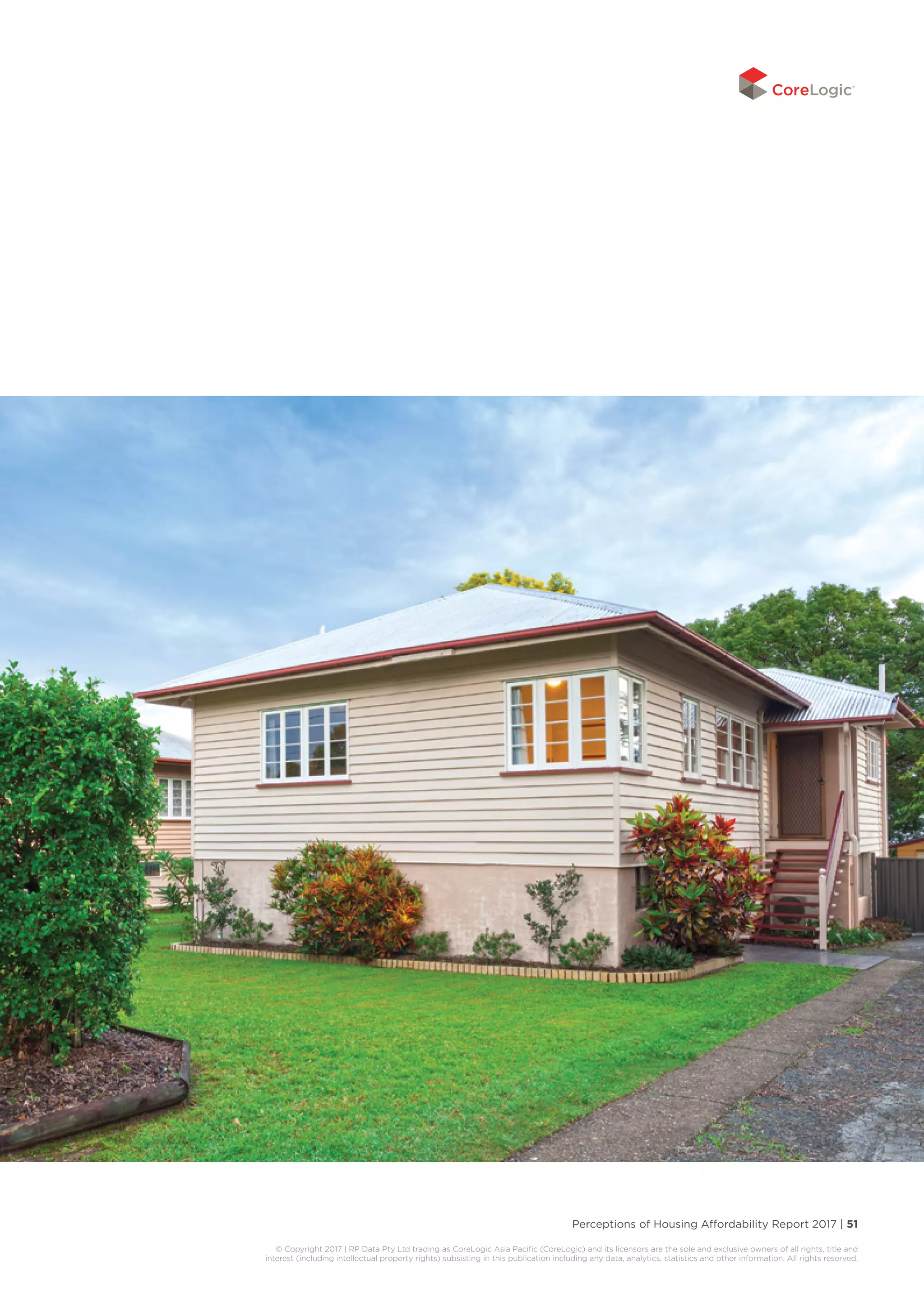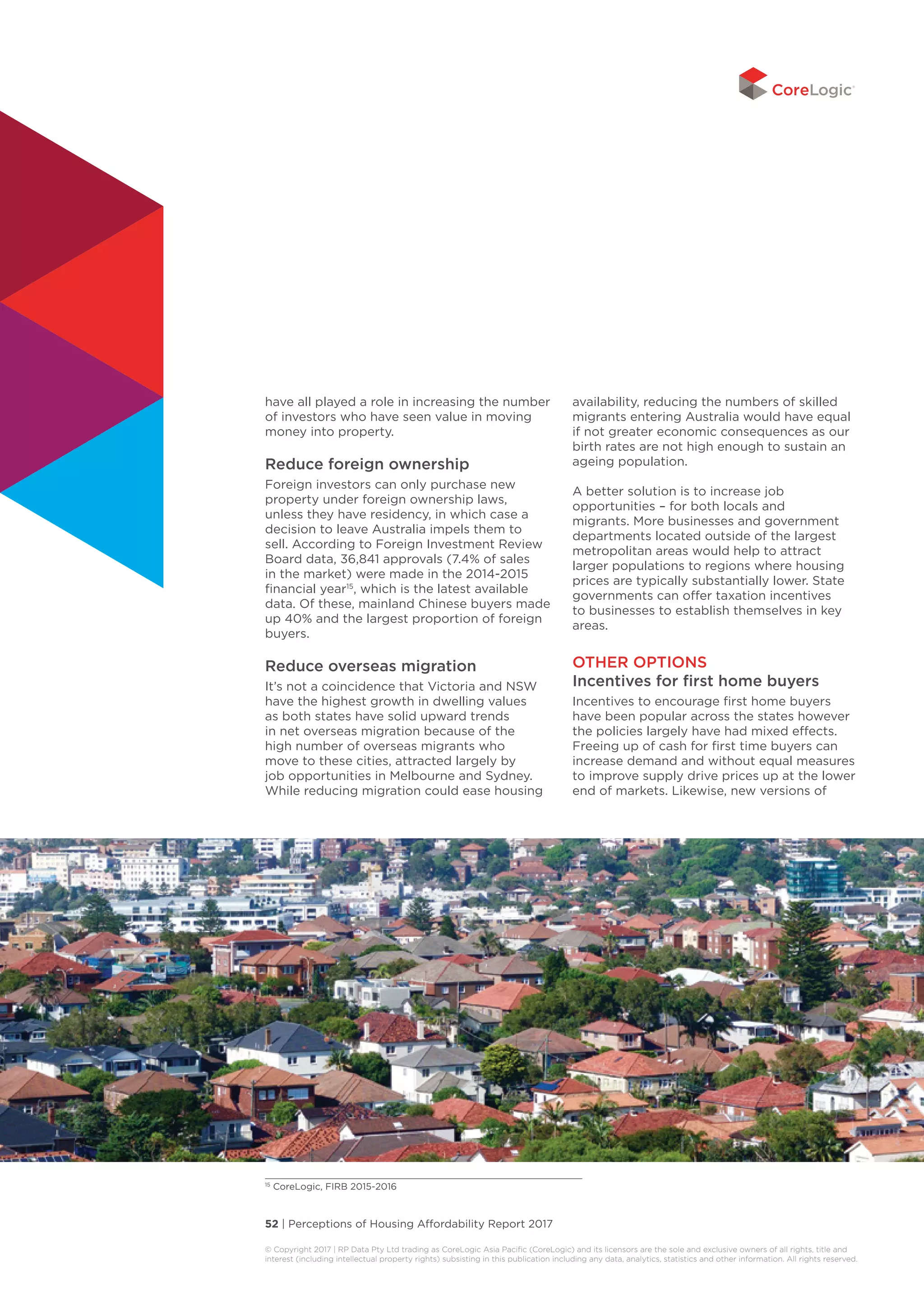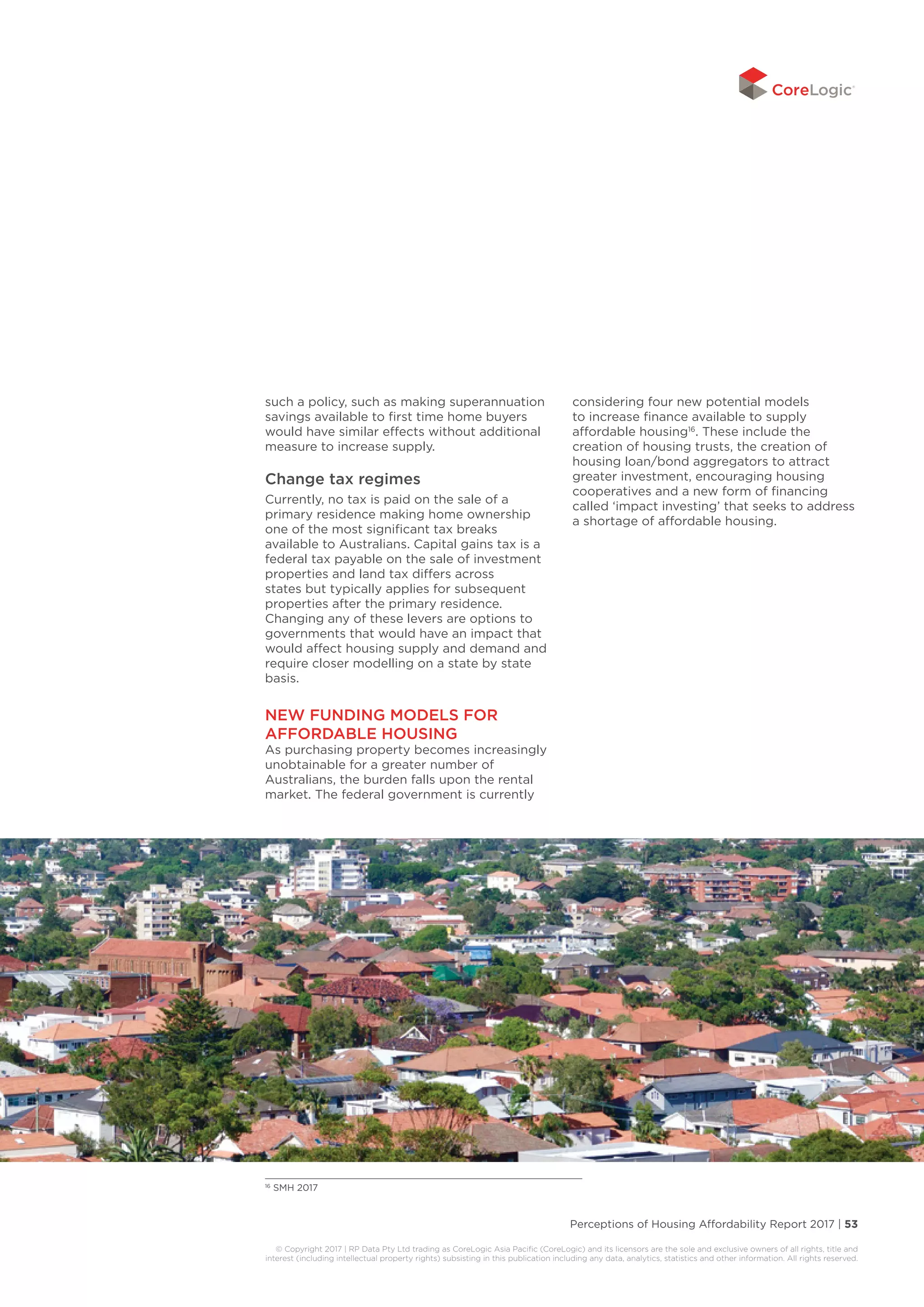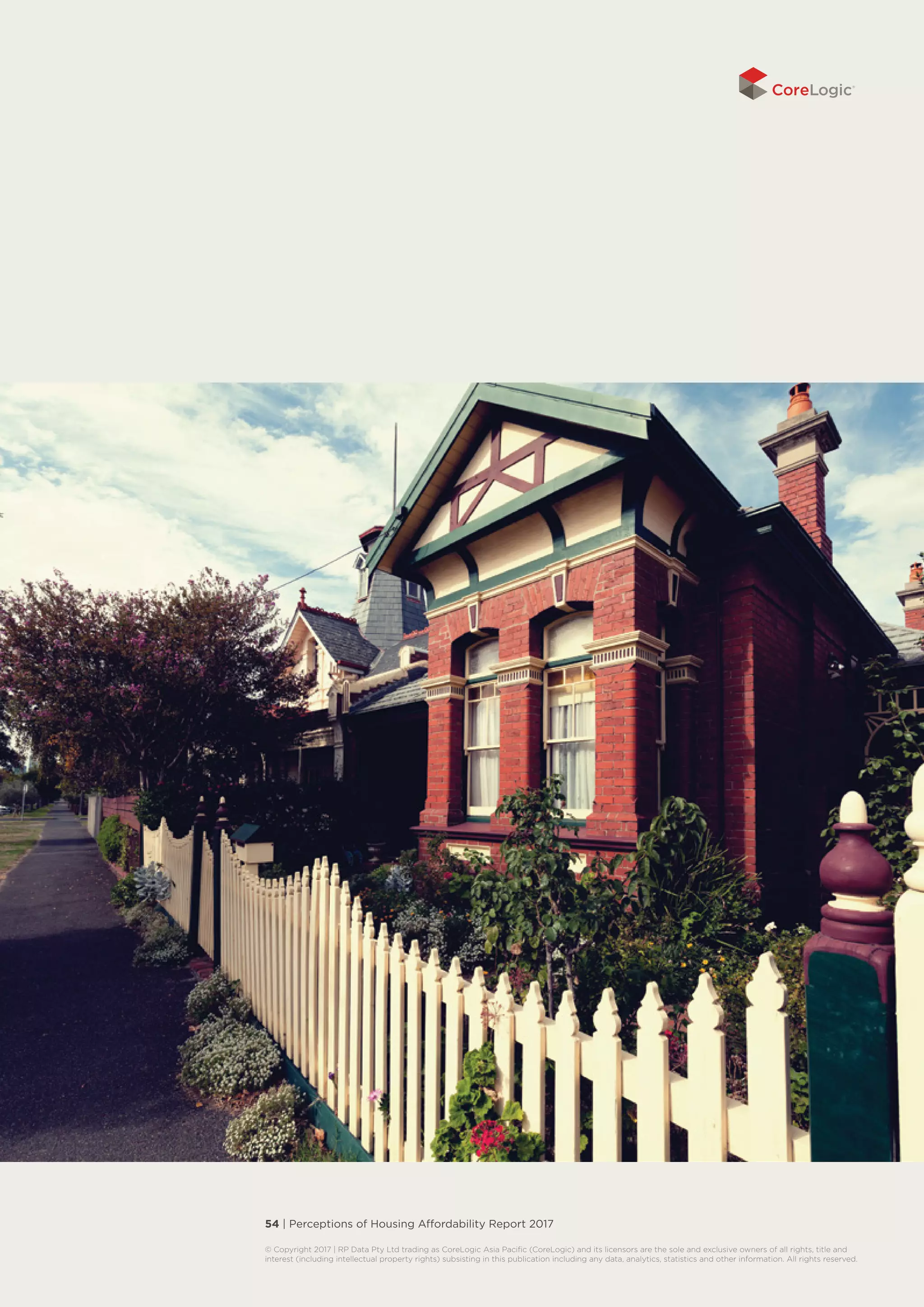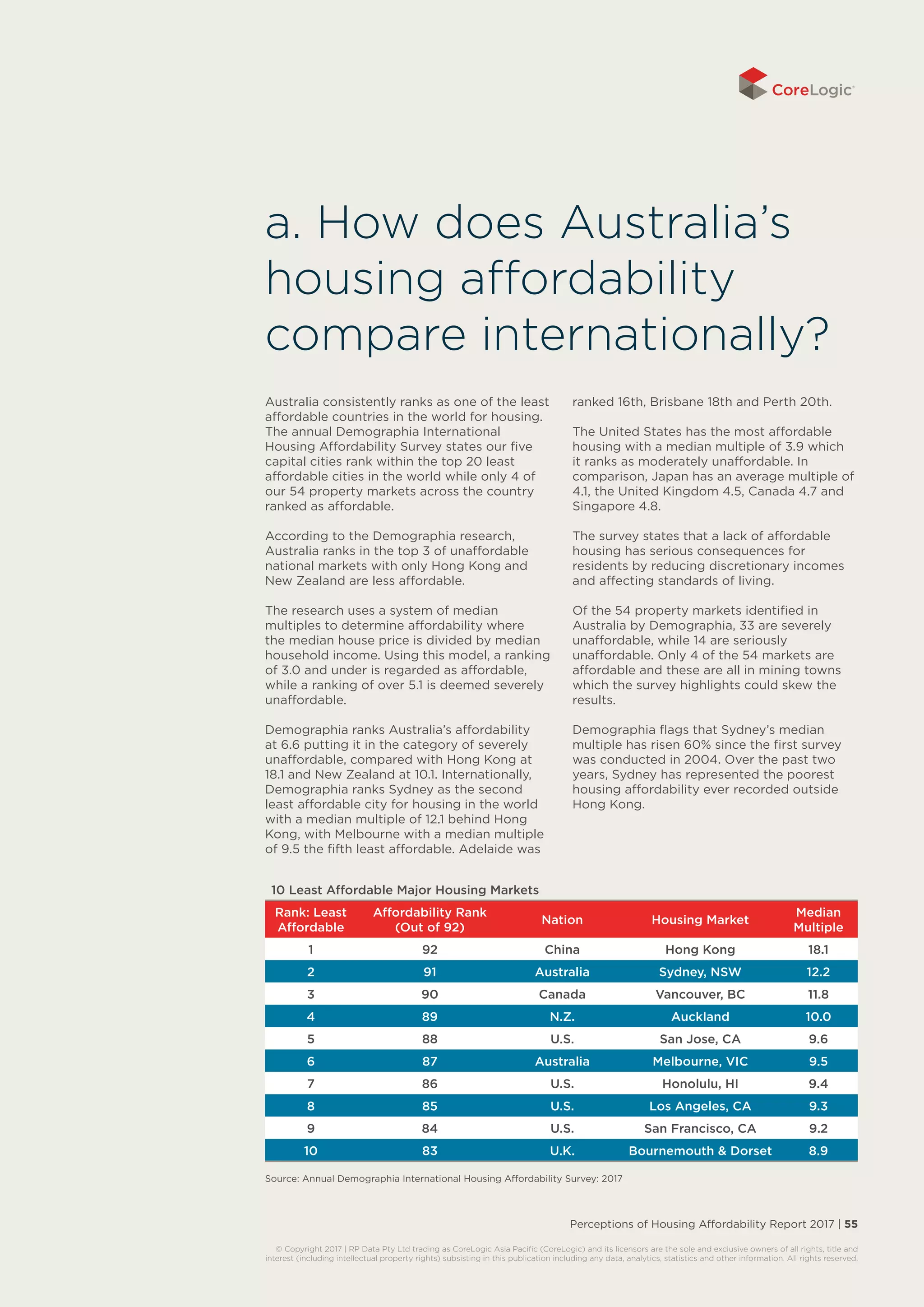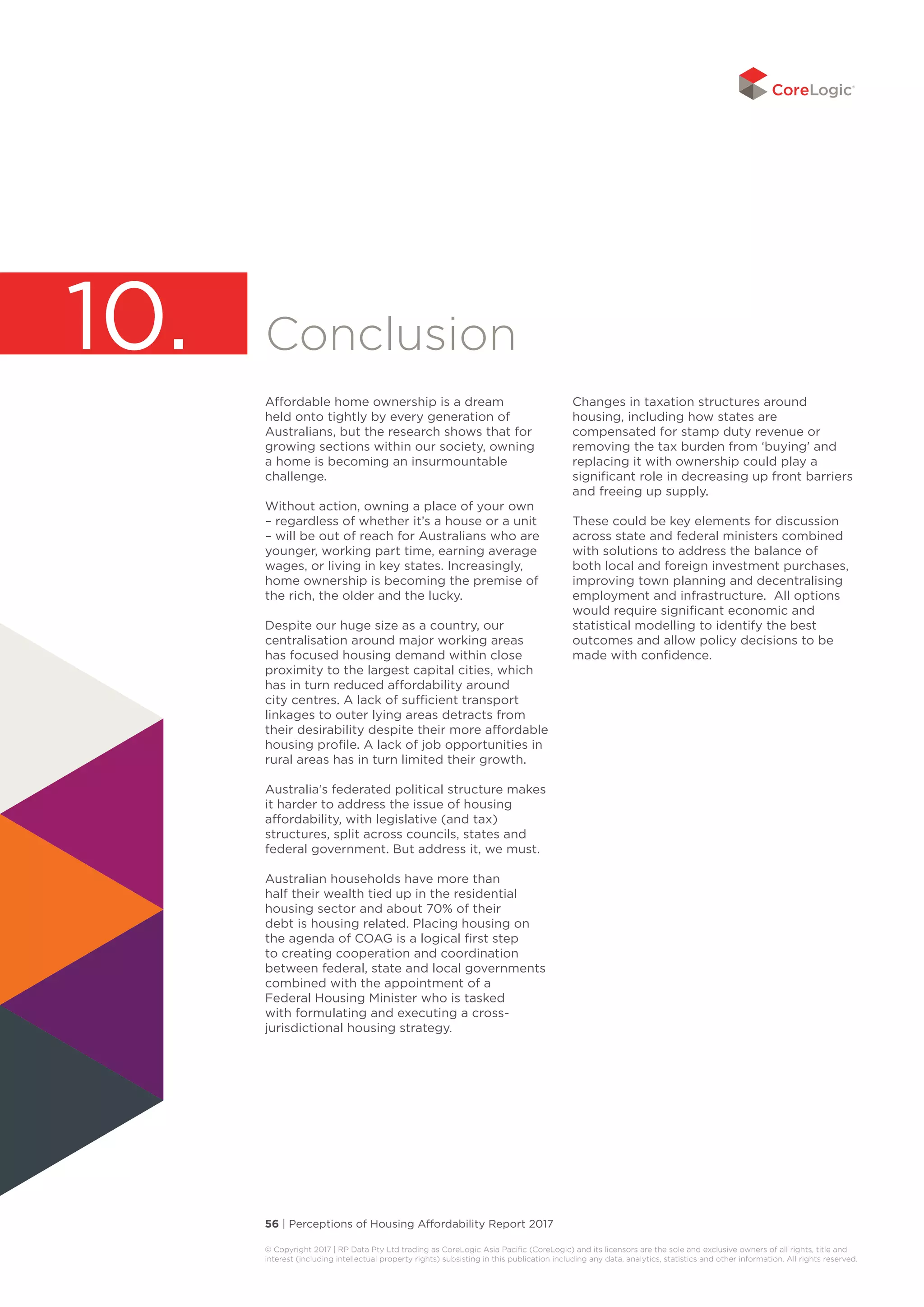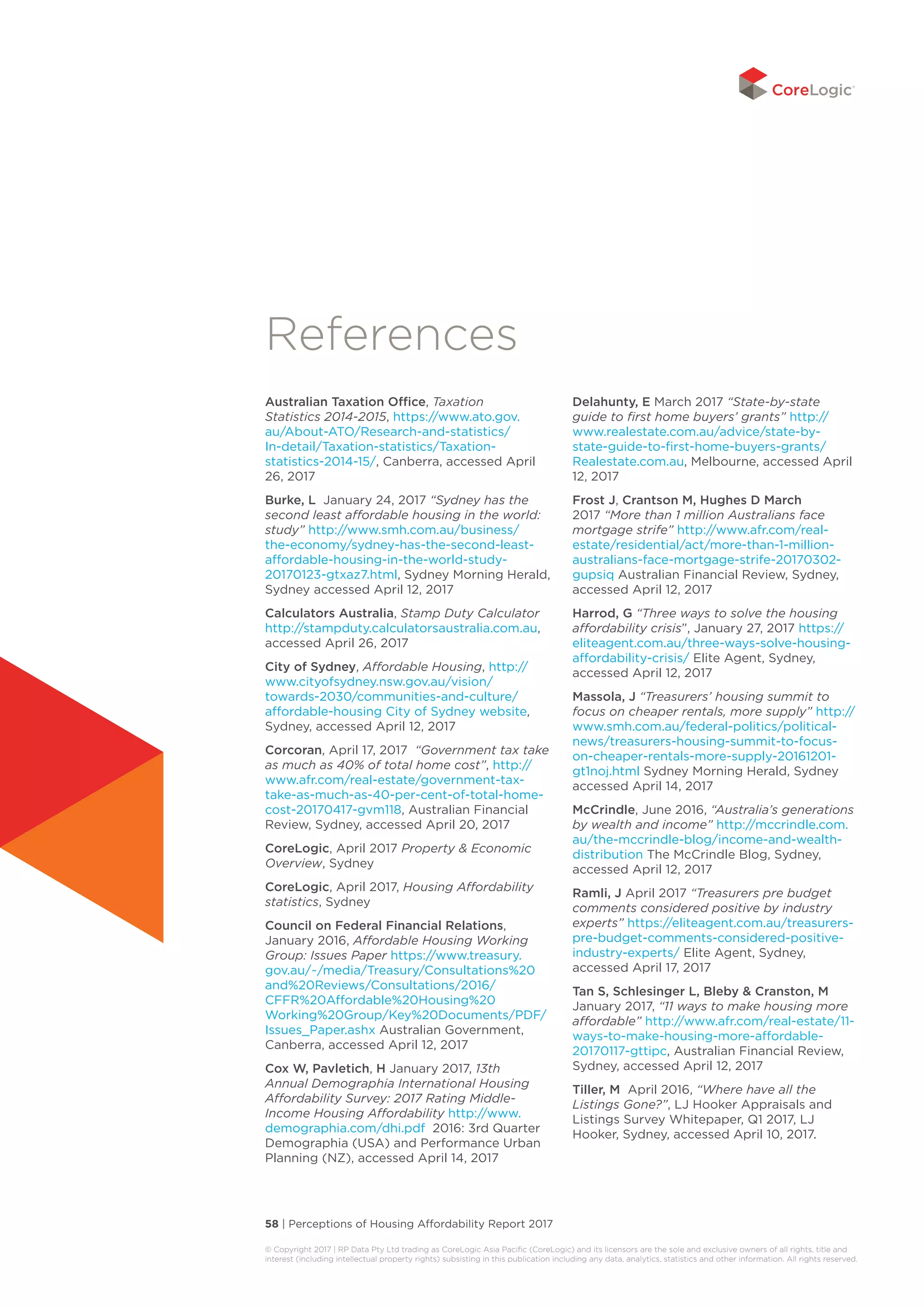The 2017 Perceptions of Housing Affordability report by CoreLogic reveals that housing affordability in Australia has significantly worsened over the past 15 years, with the average cost of buying a home now requiring 7.2 times the annual income and taking 1.53 years to save for a 20% deposit. The report highlights that a growing number of younger Australians are staying with their parents longer to save for deposits, while concerns regarding affordability are high across demographics, with 88% of non-homeowners worried about being able to afford a home. Addressing this issue requires coordinated effort from all levels of government to create effective policies that enhance housing accessibility.

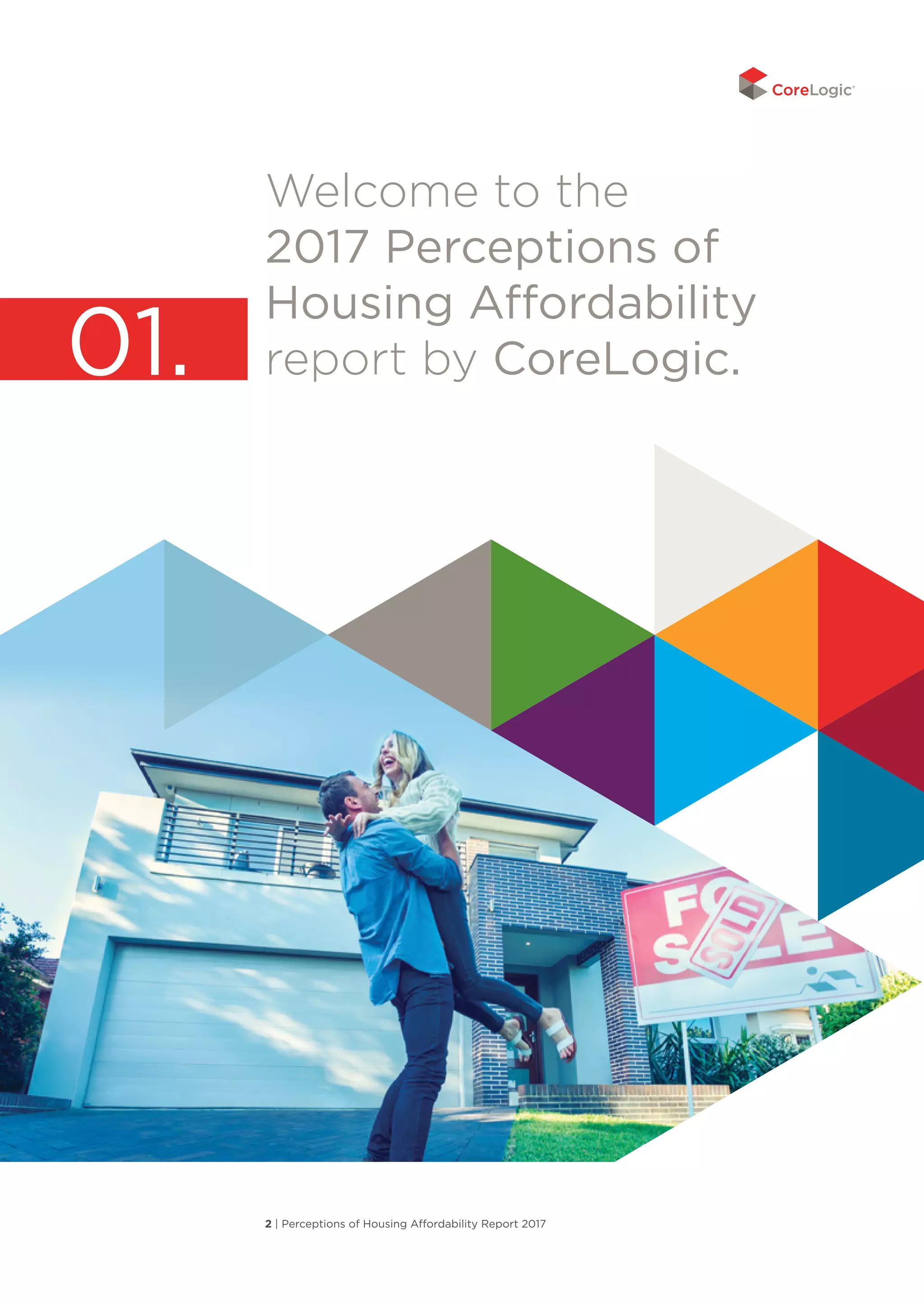
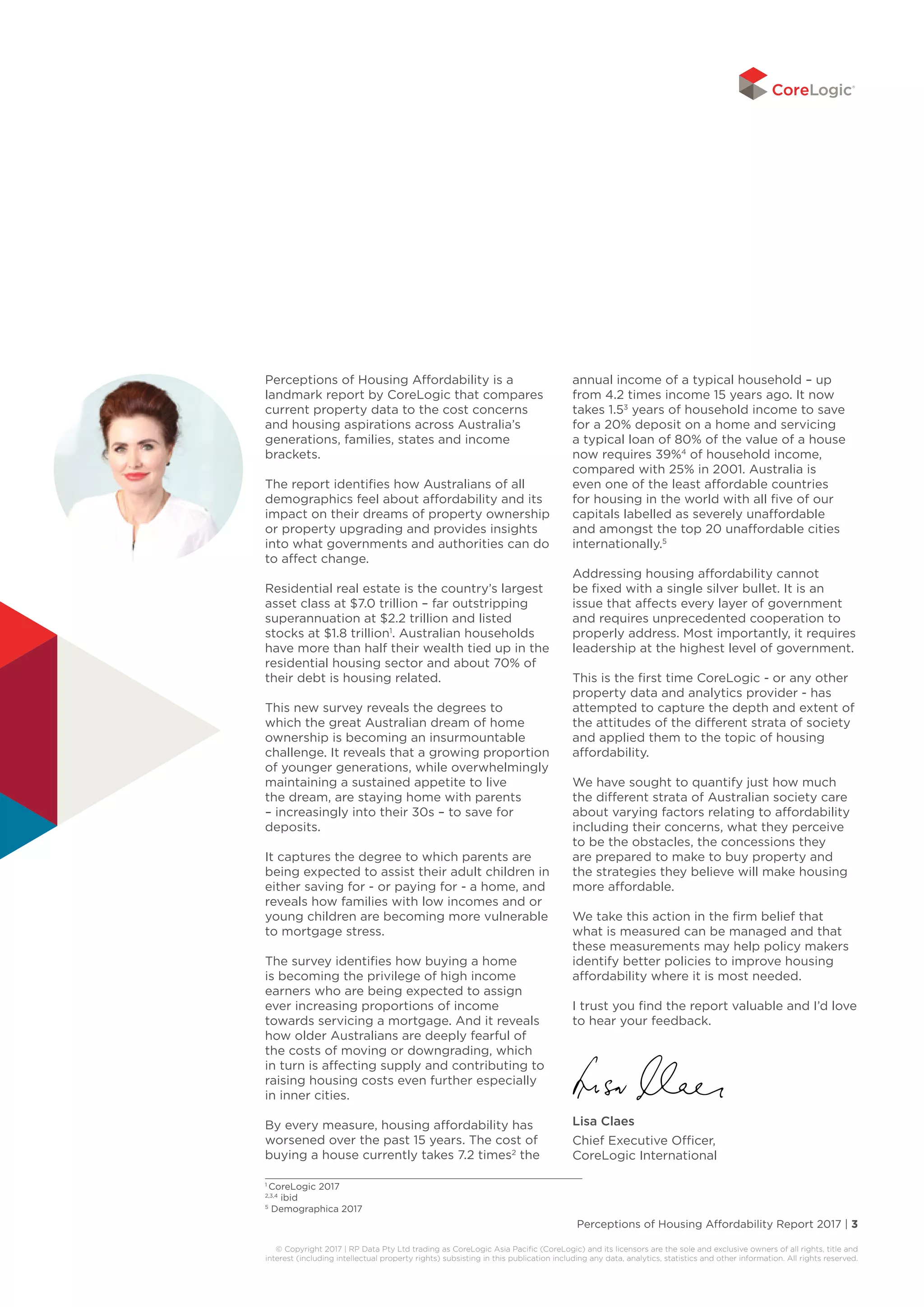

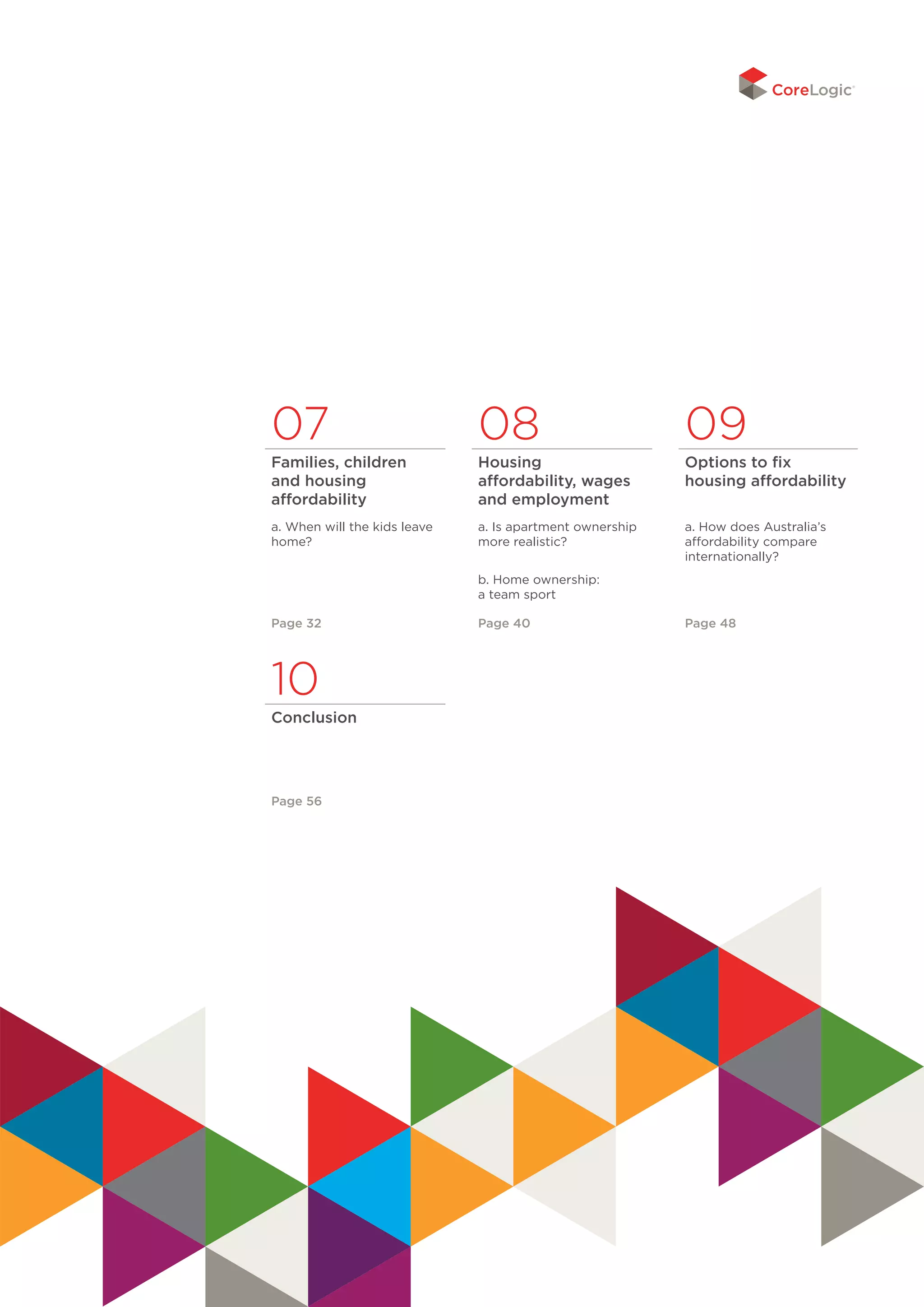
![6 | Perceptions of Housing Affordability Report 2017
© Copyright 2017 | RP Data Pty Ltd trading as CoreLogic Asia Pacific (CoreLogic) and its licensors are the sole and exclusive owners of all rights, title and
interest (including intellectual property rights) subsisting in this publication including any data, analytics, statistics and other information. All rights reserved.
Executive
summary
By every measure, housing affordability has
worsened over the past 15 years. The cost of
buying a dwelling currently takes 7.2 times6
the annual income of a typical household – up
from 4.2 times income 15 years ago.
It now takes 1.5[2]
years of household income
to save for a 20% deposit on a dwelling
compared with 0.8 years 15 years ago and
servicing a typical loan of 80% of the value of
a dwelling now requires 38.8%[3]
of household
income, compared with 25.2% in 2001.
How has this happened? As a result of low
interest rates, we have seen a reduction in the
costs associated with servicing a mortgage
which has led to financial institutions lending
ever higher amounts in markets where
demand is outstripping supply. Meanwhile
the ‘deposit hurdle’ has risen, creating a
financial barrier for new entrants to the
market and high migration has increased
dwelling demand, particularly in Sydney and
Melbourne.
Transaction costs are also playing a significant
role. Stamp duty costs on the median priced
dwelling are now around $35,000 across both
Sydney and Melbourne which is adding to the
savings challenge of prospective buyers.
To keep the dream of home ownership alive,
the Perceptions of Housing Affordability
Report identifies that Australians are making
more and more concessions in terms of
income sacrifice, property suitability factors
and staying at home with parents longer
to save for their own place, but they are
struggling.
That struggle is being fought hardest across
the generations, across different family
types, across different wage brackets – and
even across states - with older and richer
sections of society becoming the property
‘haves’ while others risk being branded ‘least
likely’ unless governments at all levels come
together to radically rethink ways to address
supply and demand.
6
CoreLogic 2017
2,3
ibid
02.](https://image.slidesharecdn.com/2017-05-corelogichousingaffordabilityreportmay2017-170508062701/75/2017-05-CoreLogic-Perceptions-of-Housing-Affordability-Report-6-2048.jpg)
